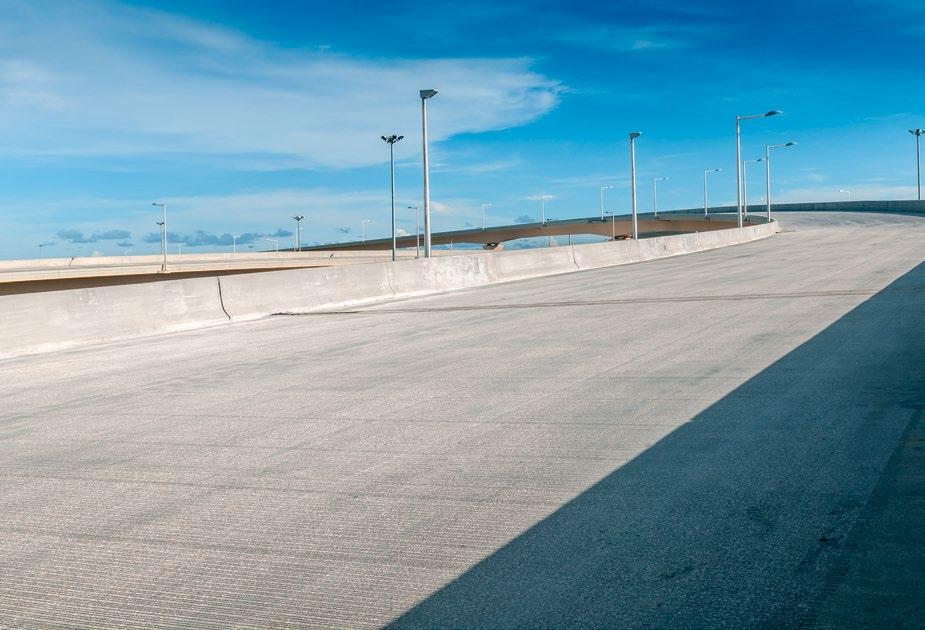






Cool, Quiet and Energy Efficient






Experience the ultimate air conditioning solution with the Samsung WindFree 4-Way Cassette. Enjoy superior cooling without uncomfortable drafts, minimal noise, and reduced energy consumption for cost savings.













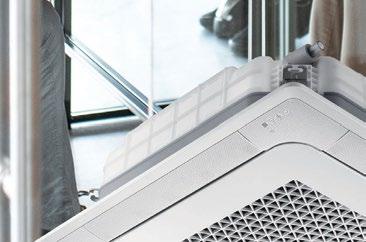

The WindFree technology gently disperses cool air through 15,700 micro air holes, creating a tranquil environment with low air speed and no disruptive drafts.




Operating in WindFree mode, this 4-Way Cassette unit produces only 34dB(A) of sound, significantly quieter than normal cooling mode.
Save energy with up to 55% less electricity usage compared to normal cooling mode*. Plus, the optional Motion Detect Sensor ensures consistent comfort by detecting activity levels, occupancy, and floor temperature.


The WindFree 4-Way Cassette uses the eco-friendly R32 refrigerant, allowing for an Ozone Depletion Potential (ODP) of zero and a lower Global Warming Potential (GWP). Therefore it’s more environmentally friendly and has a lower impact on global warming.

For more information, visit www.fourwaysgroup.co.za or contact us at info@fourwaysgroup.co.za



Our innovative Zip PowerPulse technology maintains stored boiling water to within 0.2°C of your set temperature, meaning no energy or time is wasted waiting for water to boil.
Zip boiling water is delivered smoothly and the tap has a safety lock to facilitate safe boiling water delivery.


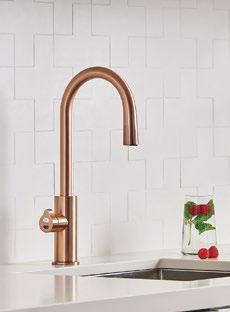

Our unique air-cooled refrigeration system is 100% water efficient.
An advanced auto-diagnostics system continuously monitors your HydroTap’s performance.
SteriTouch® is impregnated inside materials in contact with key water paths in HydroTap; Touch Pad, Tubes and Manifold for added protection against bacteria.
New feature in the command centre shows when CO₂ gas is running low.
New optimised menu in the G5 HydroTap command centre allows you to select energy modes and usage settings for easier customisation.
®

I recently saw a news report on Alec Hogg's Biznews10 conference in August, which covered the presentation given by the writer and public speaker, GG Alcock. The message is positive, which I believe our built environment economy needs right now. You can see it on the BizNews YouTube channel.
What Alcock was essentially saying is that the narrative of worsening unemployment and poverty is essentially a narrow interpretation of statistics that lead to a knee-jerk conclusion that South Africa is a failed state. It is being done to drive the agenda of those who have a vested interest in promoting a prevailingly negative outlook instead of the big picture.
As Alcock puts it, SA is rich in data but poor in insight. The elephant in the room is the informal economy, which is not included in any of StatsSA’s surveys of unemployment and poverty, unless you actually read between the lines. Disposable income, he argues, is manifest in increasing sales of liquor and clothing at retail stores and not the rhetoric of a desperate nation ‘drinking itself to death’.
Instead it is evident of wealth arising from a vibrant informal economy. It is backed by stats of a significant growth in formal housing, lower persons per dwelling and the building of ‘back rooms’ for income from rental money in cash. As Alcock puts it, “these (economically active) persons do not want a formal job”. Hence, the informal economy cocks a snook at the doom and gloom statistics. This is supported by various retail and banking statistics.
The growth in proper housing is a real thing. In this edition we focus on a massive mixed use, integrated precinct development near Cape Town. This is a striking example of just how initiatives of national government, provincial government, municipal government and the private sector can work together if properly coordinated.
We just need to join the right dots.
If you have a view to share on this, email us at editor@tobuild.co.za

A masterpiece of innovative freshness technology.
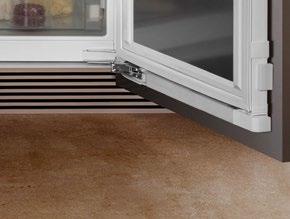



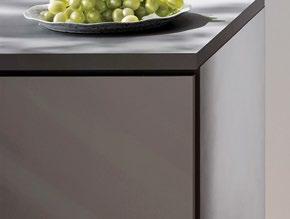



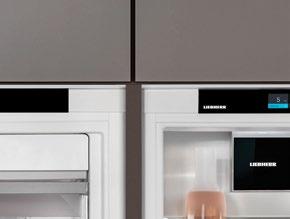

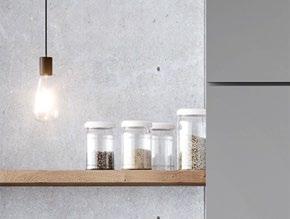

Refrigeration & Freezing


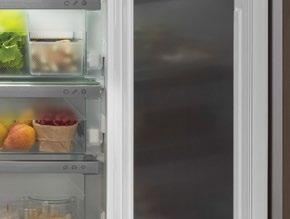












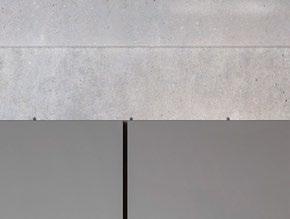












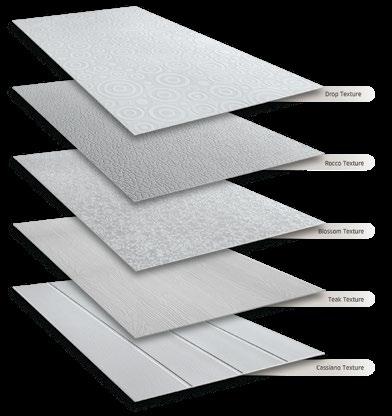


 SHERA Plank
SHERA Ceiling Board
SHERA Deco Ceiling
SHERA Plank
SHERA Ceiling Board
SHERA Deco Ceiling
98 90
PUBLISHER: Elroy van Heerden Mays elroy@mediaxpose.co.za
EDITOR (& Imaging): Gareth Griffiths editor@tobuild.co.za


SUB-EDITOR: Tessa O'Hara
CONTENT MANAGER: Wadoeda Adams artwork@mediaxpose.co.za
CONTENT ASSISTANT: Ketsia Makola ketsia@mediaxpose.co.za
EDITORIAL CONTRIBUTORS
Brendan Reynolds Bryan Hack
John Smallwood
Kim Williams Philip du Toit

Mohau Mphomela Reinhart Schwendinger Sharné Bloem

DESIGN & LAYOUT
Shaun van Heerden Mays
Anja Bramley
PROJECT MANAGER: Rene van Heerden rene@tobuild.co.za

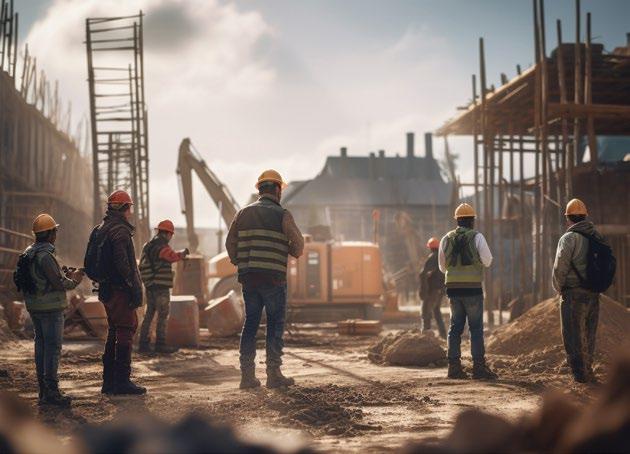
ADVERTISING SALES: Jacqui Marsh jacqui@tobuild.co.za Lindie van den Abeele lindie@mediaxpose.co.za

DIGITAL AND SOCIAL MEDIA
Kyla van Heerden Tia Arendse
DISTRIBUTION: Shihaam Gyer distribution@mediaxpose.co.za
MEDIA PARTNERSHIPS: Maurisha Niewenhuys maurisha@mediaxpose.co.za
CHIEF FINANCIAL OFFICER: Shaun van Heerden Mays
WEBSITE ADMINISTRATOR: Justin McGregor
RECEPTIONIST: Daniëla Daniels
RETAIL DISTRIBUTION: On The Dot
AIRPORT DISTRIBUTION: Media Support
PICTURE CREDIT: 123rf.com / pixabay.com
SUBSCRIPTION PAGE 110
Van Heerden Mays Publications CC t/a Media Xpose Company Reg No: 2010/128859/23 6 Carlton Crescent, Parklands, 7441 Tel: 021 424 3625 | Fax: 086 270 9693 Email: info@tobuild.co.za | Website: www.mediaxpose.co.za
Exce enceinExposu re
Disclaimer: The views expressed in this publication are not necessarily those of the publisher or its agents. While every effort has been made to ensure the accuracy of the information published, the publisher does not accept responsibility for any error or omission contained herein. Consequently, no person connected with the publication of this journal will be liable for any loss or damage sustained by any reader as a result of action following statements or opinions expressed herein. The publisher will give consideration to all material submitted, but does not take responsibility for damage or its safe return.








































































































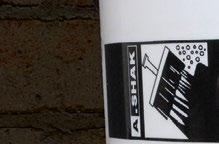
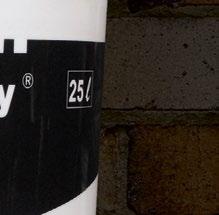









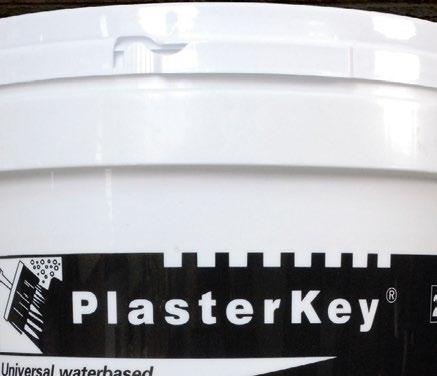























An iconic Danish furniture brand grandly unveiled its award-winning 2023 collection at 100% Design Africa showcase, an exclusive platform that curated the most inspirational designs and designers as part of Decorex 2023.
The range includes a stunning array of sofas, armchairs, modular pieces, and sleeper couches. Each creation exudes the hallmarks of Danish design, effortlessly combining form, function, and finesse to elevate any living space, according to their press release.

SOFACOMPANY enjoys an illustrious reputation as a total farm-to-table Danish design, production, and to-market operation, spanning 11 countries, which sets them apart as industry leaders.
“With an unwavering commitment to quality, craftsmanship, and sustainability, their designs captivate the hearts of design enthusiasts worldwide all while retaining their truly affordable price points,” says the Decorex press release.
Email them on jonathan@sofacompany.co.za for further information.
Decorex 2023 saw the launch of décor magic in the form of a collaboration between Cape Town’s own Kim Williams, much respected interior designer and To Build columnist, and Jessica Molebatsi’s NOLUTHANDO print designs. The monochrome designs feature typical African village scenes.


Shortly after the Covid lockdowns, Jessica decided to create a range that would mean something for all South Africans. Her range embodies a culturally cohesive concept that embraces past and present, and the differences across racial and cultural lines.
Jessica is married to South African actor, Wandile Molebatsi, who is half Tswana and half Xhosa. After the marriage, Jessica’s “given” name from her Xhosa aunts became Noluthando, meaning “the one who gives love”. During her career as a fashion designer, she has dressed the late Winnie Mandela for her 80th birthday and has also dressed other prominent South Africans.
The Noluthando range of monochrome fabrics were showcased globally at the 2022 Paris Fashion Week to great acclaim where Jessica was joined by actress and media personality Minnie Dlamini, as well as Azola Mona as models on the streets of Paris and Minnie on the show.
Kim Williams connected with Jessica in mid-2022 and this seeded the idea of applying the JessicaJane Noluthando fabric print designs into interior spaces to elevate a unique South Africa expression. Since then, they have gone on to launch a new interior decor range designed by Kim Williams. Printed on various décor
accessories, the products are available in store and on order (www.kimwilliams.co.za/ curated-by-kim-williams)


From Goa, India, it was reported in July that the Leadership Group for Industry Transition (LeadIT) and the Global Cement and Concrete Association (GCCA) jointly launched a new tracker to help policymakers, industry experts, academics and the public monitor worldwide decarbonization efforts in the cement industry.
The Green Cement Technology Tracker (GCTT) was unveiled at an international intergovernmental meeting focused on clean energy, which took place in India.

Cement and concrete are vital to the built environment, used for homes, infrastructure and to provide things like clean running water. But the sector also accounts for 7% of global CO2 emissions. With the launch of the GCCA’s Concrete Future 2050 Net Zero Roadmap, it became the first heavy industry to set out a clear plan on how to decarbonize. The launch of the CCTT is regarded as the next step along the industry’s roadmap.
“To empower the industry and policymakers committed to emission reductions, our goal is to provide comprehensive tracking of public announcements of investments in low-carbon cement technologies,” says Per Andersson, Head of the LeadIT Secretariat.
The tracker currently includes Carbon Capture and Storage (CCS) and Carbon Capture Utilization and Storage (CCUS), accounting for 36% of planned reduction levers in the GCCA 2050 Roadmap for Net Zero Carbon Concrete that leading manufacturers have committed to. Future steps to enhance the tracker include expanding its scope, to cover more technologies that reduce emissions from cement manufacturing.
“Unleashing technology such as CCUS is key to achieving our net zero mission in our sector. Carbon capture pilots, projects and announcements are picking up pace across the world. This technology works, and our next goal is to scale up, working with stakeholders such as governments and the investment community to help transform the industry worldwide,” adds Thomas Guillot, Chief Executive of the GCCA.
The tracker will be instrumental in assessing progress and ensuring transparency of low-carbon cement technologies, initially carbon capture and, in the future, complementary efforts to reduce emissions from cement manufacturing.
According to the parties involved, preliminary data from the CGTT reveals that initiatives for carbon capture technologies are underway worldwide, predominantly in Europe, followed by Asia, North and South America, and Australia. Full-scale operational carbon capture plants are expected to come on stream in the coming years. Approximately half of the announced CCS and CCUS projects disclose their expected capture volumes. Postcombustion capture technology is currently the most common investment.
The GCCA and its members account for 80% of global cement production capacity outside of China, as well as some key Chinese manufacturers. In turn, LeadIT brings together countries and companies committed to achieving net-zero carbon emissions from industry by 2050 and is supported by the World Economic Forum (WEF). The tracker’s content is derived from public sources, and any confidential projects may not be represented in it.
Eastern Cape (041) 001 0182
Limpopo (015) 307 2151
Mpumalanga (013) 753 2060

Gauteng (011) 262 2727


• • to apply in one single coat.

• 1 litre covers up to 50m². Low VOC’s.

• Wide colour range with over 70 colours to
Kwazulu Natal (031) 569 2236
+264 81 379 2625
• choose from.
• Good stock levels & quick turnaround times.
• Competitively priced product backed by

• great service.
• Members of the Green Building Council of

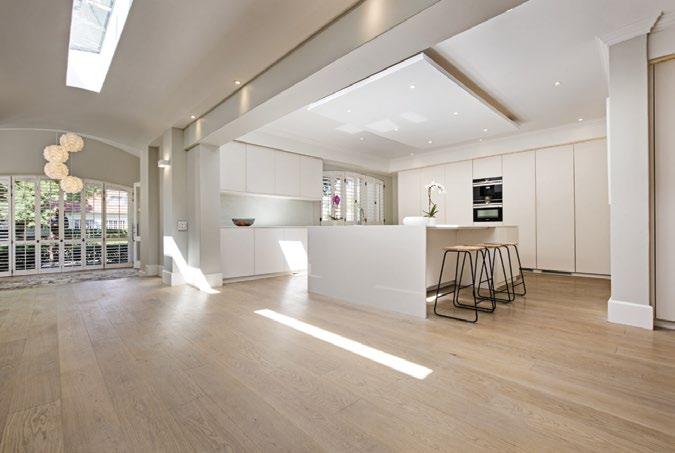
• South Africa and the African Institute of Interior
• Design Professions.
Address: Jax House, 18 SouthWay Street, Kelvin, Sandton, Johannesburg, 2103

Phone: +27 (11) 444 7221
Email: info@jaxoleum.co.za

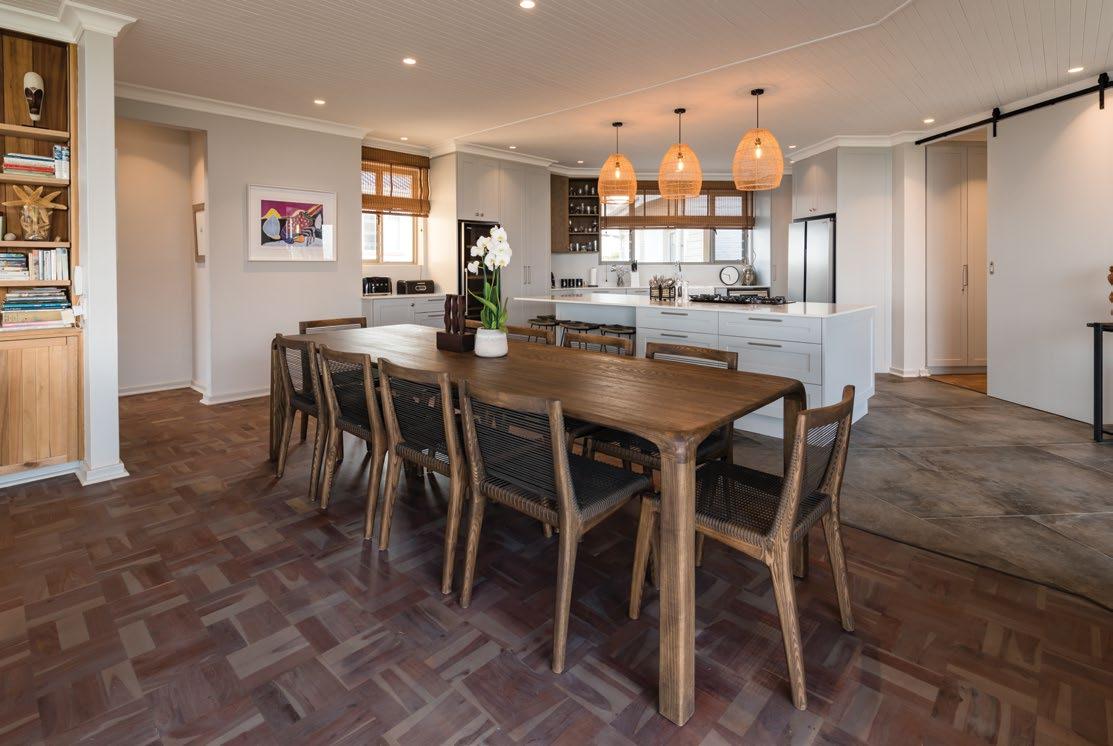

Web: www.jaxoleum.co.za


The Chartered Institute for Procurement & Supply (CIPS: www.cips.org), the world’s largest professional body for procurement and supply professionals, moves to one of Southern Africa’s 5 star Green Star rated buildings.
By establishing offices in the PPS Centurion Square property, which enjoys a five-star rating from the Green Building Council of South Africa, the global membership organisation further enhances its status as a champion of sustainable procurement.

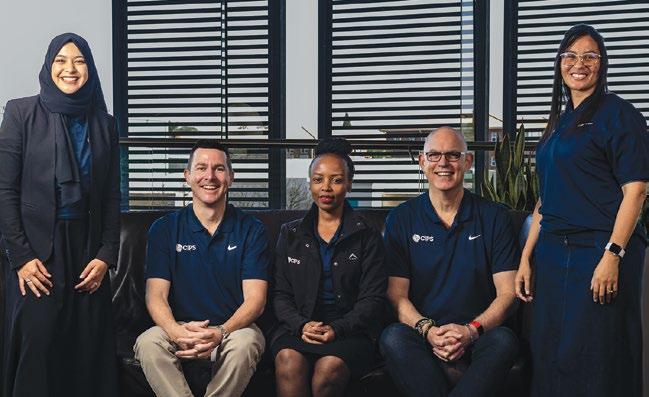
Opened by the PPS Group Property Fund Trust in 2016, in the heart of the Centurion central business district, the 23 000m² building is renowned for saving energy through the use of shade and natural light, LED lighting, efficient heat pumps, carbon monoxide monitors, dimmable parking lights, thermal insulation and an online energy monitoring system.
Rain and greywater is also collected and cleaned via a filtration and ozonation system, meaning that the building’s municipal water use is estimated to be 86% less than that of a conventional office building.
Jolene Ludick, Director for CIPS Southern Africa, says that the CIPS Sustainability Model calls for sound governance built upon a culture of sustainability that delivers on social, economic and environmental factors. CIPS’ relocation to the Centurion building puts this principle into practice and encourages member organisations to follow suit.
“Organisations that make a concerted effort to reduce water usage and carbon emissions while moving to renewable energies and green buildings not only help to minimise the impact on the planet, but resonate with governments and consumers who are increasingly drawn to sustainability practices,” she says.
Eco-conscious consumers can improve an organisation’s financials and build brand loyalty. Sustainability practices also assist a business to future-proof itself against scarcity in supply and environmental changes, while innovation is also encouraged by thinking about how to be more efficient with natural resources.
“Sustainability is and should be embedded in all organisations and is the most seismic change and challenge for the procurement and supply profession,” Ludick adds.
ASP Fire is able to conduct fire-risk assessments and Rational Fire Designs for shopping centers.

Fire plans have to be resubmitted for approval whenever a tenant changes, or if the internal layout of a shop changes.

Ceiling void smoke detection, void fire protection and the activation of smoke extraction systems by tenant fire panels are areas often ignored when shopping centers are built.
Most tenants are not aware of the specific requirements for automatic fire detection and alarmsystems and their obligation to install them.



TO BUILD proudly features Allbro on the cover of this edition. In this Cover Story, they share their revolutionary Domestic Distribution Board range (ALL-DB) with readers, aimed at the retrofit market for backup power installations and renewable energy sources.
Allbro
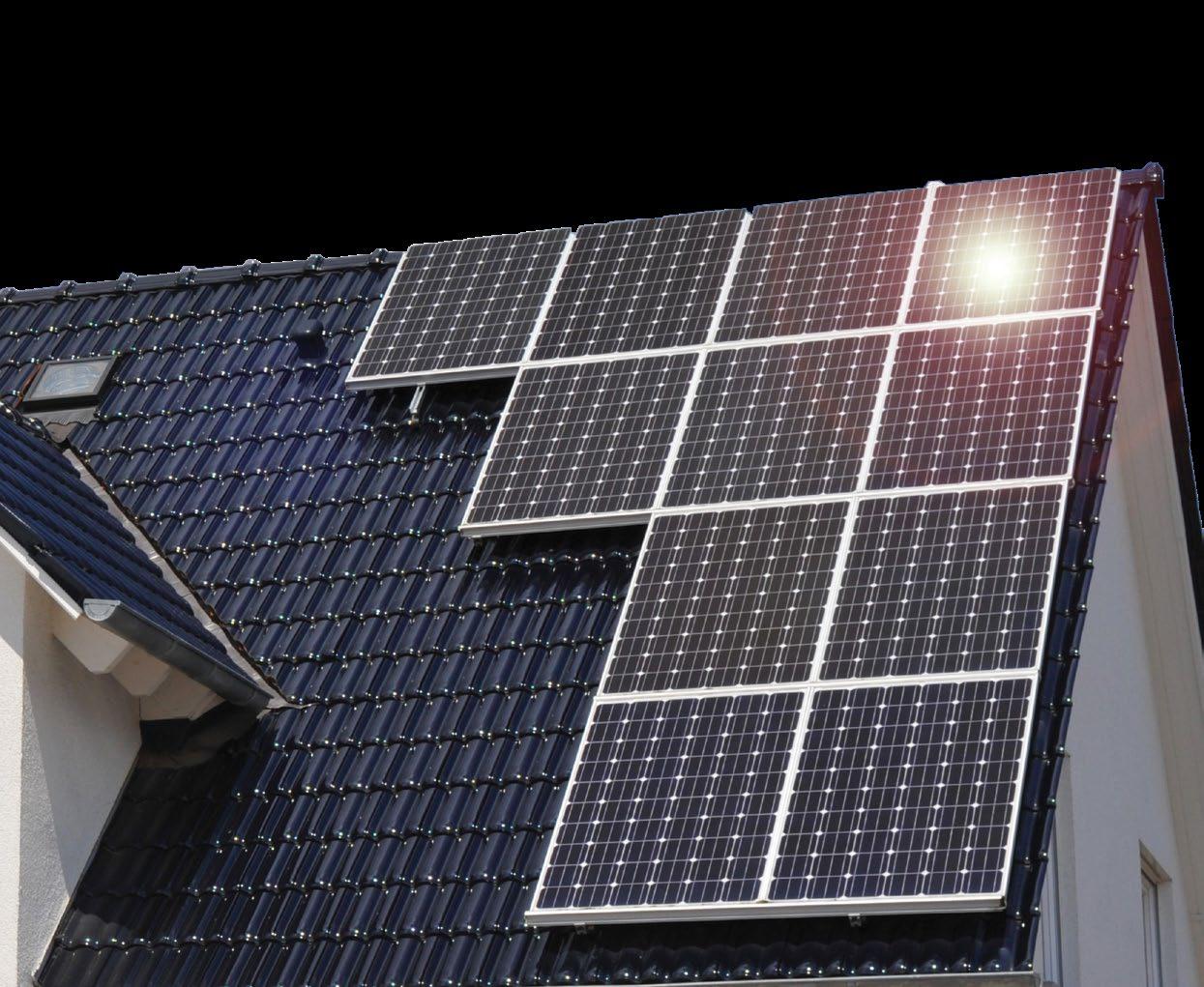

In a remarkable stride towards reshaping the landscape of home power distribution, Allbro has unveiled its groundbreaking innovation; the ALL-DB range of Domestic Distribution Boards.
These boards, essential components in the intricate web of household power distribution, are set to redefine the way we approach renewable and backup power installations in existing homes. With a fusion of cutting-edge technology, safety considerations, and design elegance, ALLDB charts a new course for efficient and secure power management.
ALL-DB's transformative edge lies in its adoption of Glass Reinforced Polyester (GRP).
Traditionally, distribution boards have been installed in the initial construction phase of homes, seamlessly embedded within the structure. However, the surge in renewable energy installations and backup power systems necessitates a paradigm shift in installation techniques.
Retrofitting distribution boards requires innovative solutions to cater to these evolving demands. ALL-DB enters the market as a meticulously crafted response to the challenges posed by retrofitting power distribution in existing homes.
Safety is an unwavering priority in any electrical installation. The conventional

distribution boards, snugly nestled within walls, benefit from the insulation and protection offered by surrounding brick and mortar. However, surface-mounted DBs constructed from conductive materials pose potential shock hazards. Furthermore, using plastic materials in distribution boards introduces a heightened risk of fire hazards.


ALL-DB's transformative edge lies in its adoption of Glass Reinforced Polyester (GRP), a robust thermoset material celebrated for its superior insulation and flame-resistant properties.
This strategic choice of material eliminates the need to compromise between safety and practicality, ensuring installations are both secure and durable. This preference for GRP has been validated and endorsed by leading commercial solar farms, where it is widely favoured for combiner boxes due to its proven reliability.

Direct Current (DC) installations, distinct from traditional AC systems, introduce unique characteristics. The challenge of detecting DC arcing, which can lead to prolonged, potentially hazardous conditions if fueled by flammable materials, is a pressing concern.
The use of plastic, prevalent in households, can inadvertently become a fuel source in such scenarios. By embracing GRP for its ALL-DB range, Allbro effectively mitigates this risk, delivering homeowners an unequivocally safer solution.
Another groundbreaking aspect of the ALLDB range is its minimal depth, a departure from the bulkier designs of yesteryears. While depth is a non-issue for constructionphase installations, retrofitting demands a more streamlined approach. ALL-DB's design innovation reduces the bulkiness of the installation, enhancing the aesthetics and practicality of the DBs.
Cable access, a pivotal consideration in any electrical installation, has also been revolutionised by Allbro's design prowess. The new ALL-DB features an elegant cable entry system at the backplane, eliminating the struggle associated with looping cables at varying distances from the wall. This innovation ensures tidy installations, enhancing the visual appeal of home power setups.
ALL-DB is more than just a product; it's a testament to Allbro's unwavering commitment to local excellence and sustainability. With much of the technology used in solar installations imported, ALL-DB stands as a beacon of local ingenuity.
Designed, moulded, and manufactured in South Africa, these distribution boards reflect the nation's growing prowess in the field. Every step of the production process, from tooling and material formulation to assembly and packaging, is a testament to the power of local production and innovation.
In the context of broader energy challenges and rural electrification efforts across the continent, ALL-DB positions Allbro as a key player in reshaping power distribution.
Its innovative approach, encompassing material advancements, design elegance, and local production, marks a pivotal step towards empowering homes with sustainable and secure energy solutions.
Elevate both functionality and aesthetics in poured concrete slab ceilings. An innovative solution, the Slab-box™ is designed to significantly reduce cost and the amount of corrective work needed on recessed lighting installations. With our shutter mounting system, your downlights are perfectly aligned from the moment they’re screwed into place. The bevelled edge ensures a seamless installation, saving installers 70% on concrete plastering. The Glass Reinforced Polyester (GRP) material of the enclosure ensures further benefits: it’s non-corrossive, has a wide temperature range, and long life span.

We combine versatility with increased electrical safety. The PSO-2 Stealth™ boasts a waterproof design that ensures the complete protection of your electrical sockets, even during use in wet environments. It’s sleek and practical design make the PSO-2 Stealth™ a firm favourite for both residential and commercial settings.


A revolutionary camera-mounting system. Designed for indoor and outdoor use, this junction box ensures that your security system will remain protected for decades. The Camera-Den™ halves installation time, ensuring a quick deployment in your home with a professional finish guaranteed. Choose the best SA has to offer.
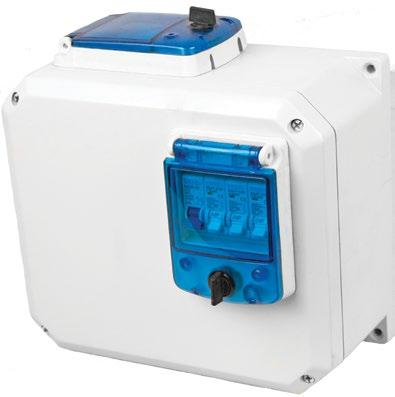

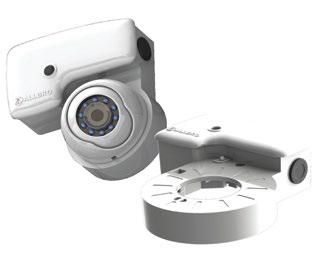
The first of its kind

No pain, all gain.
Sit back and relax: pool maintenance just got a whole lot easier. The Stand Up Pool Box™ is designed with the timer located on the top of the box, allowing for effortless access. Its sleek design blends in seamlessly with the poolside aesthetic - install it directly on the wall. Made from GRP material, the Stand Up Pool Box™ has a UV life of 25+ years. Available with a CBI WiFi timer so that you can set your pool timer from anywhere, at any time.

As summer approaches, South Africans are eager to shed their winter skins and revive their existing living spaces into a light, bright and personalised oasis.
Kim Williams Kim WilliamsCelebrated top interior designer Kim Williams, shares some invaluable insights on the latest interior trends for Spring/Summer 2023 and four simple tips to transform your home into a summer haven of comfort, style, and functionality.


A vibrant resurgence of bright and bold colour is taking centre stage this summer, so be prepared to say farewell to the monotony of greys and neutrals. The general rule is the brighter the better, with explosions of rich, bold earthy hues against a backdrop of natural tones to create a visually stimulating experience.
Interlaced with this is the growing trend for spaces to be grounded and remain connected to nature. Summer homes are continuing to embrace low seating, natural materials, and locally made, Afrocentric arts and handcrafted items that create a harmonious balance between your living space and its surrounding environment.
Summer is all about bringing the freshness from outside inside, and we are seeing a big shift towards incorporating indigenous plants like fynbos into the interior space, both natural and artificial.
The desire to be kinder to our planet as well as the costof-living crisis means the subtle move towards minimalism continues. The “less is more” concept is perfectly suited for apartment and compact living environments, where innovative designs and space-saving furniture can really embrace this approach and elevate the tiniest of spaces.
For bigger areas, seamless living is what it’s about, encompassing breaking down closed spaces with inlaid furniture, built-in wall coverings, and shelving to create a perfect parity of functionality and aesthetic appeal.
When it comes to creating your ideal summer sanctuary, never underestimate the power of a well thought out layout. The first tip with any renovation is layout! Get this right and don't compromise on it because if the layout is wrong, it doesn't matter how pretty you make a space, it just won’t work. Layout, for me, is always the starting point.
The trick to a clever layout is using one that enhances functionality and reflects your lifestyle. In a recent student accommodation project, we were tasked with transforming small units into practical and sophisticated adult spaces for students that were comfortable, but reflected a shift from teenager into adulthood.

Dividers were ingeniously used to zone off areas whilst also doubling up as storage and bookends. Comfortable yet space-efficient couches, coffee tables with multifunctional ottomans, and versatile café tables in the dining area also ensured the fluidity of the small space, making it easily adaptable for several uses.
In another project, we revamped the lounge layout so that it seamlessly integrated with the owner’s kitchen and dining area to create a large multipurpose space. Eye-catching countertops served as servers and chopping areas, while counter level ovens were easy on the eye and delivered a sleek and linear aesthetic.
If you don’t need it, get rid of it. Don't shy away from decluttering and clearing out unnecessary items that overwhelm and stagnate your space. It’s like shedding the spaces' old skin. We need to embrace the season of renewal by shedding the old and creating space for the new. Don't be afraid to put things in cupboards and bring them out later.
In a bespoke bathroom project, we let go of the unnecessary to create a serene haven with a touch of luxury. The beauty of the neutral space was accentuated by simple pops of greenery and nostalgic art pieces sourced from a second-hand shop, while the luxurious element was achieved with small things like fluffy white towels.
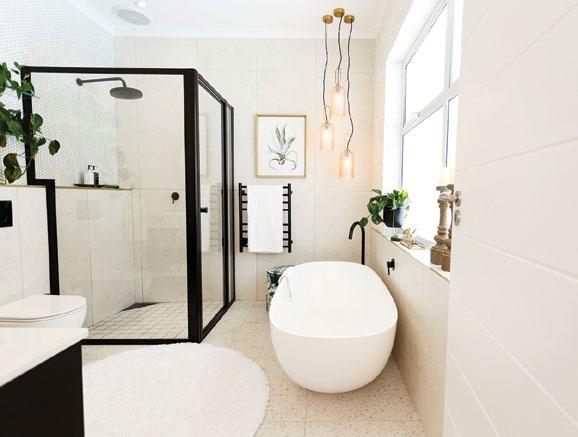
2 3 4

After wintery grey skies, it is time to inject joy back into your surroundings with vibrant colours that create a sense of happy living. Don't be afraid to experiment with complementary colours with a small burst of contrast to really bring your space to life.
That is exactly what we did in a recent kitchen refurb, which is a wonderful example of how to use colour to get a space ready for summer. We used a beautiful, bright, rustic green which not only embodies elements of nature, but also adds a warm cosiness to the space and a vibrancy to what is essentially the heart of the home.

Finally, for a truly sustainable, inviting and completely personalised summer home, remember to repurpose items wherever possible. My philosophy of repurposing resonates with warm energy and I am always looking for opportunities to reupholster furniture or add a splash of paint to breathe new life into cherished possessions.
I always try to repurpose as much as possible to help reduce waste and bring a beautiful warm energy into the space. Breathing new life into old treasures adds character and reflects individuality and eco-friendliness.
Swartland has been supplying the building trade with quality products since 1951. Our world-renowned production excellence is applied to our vast range of products: wooden windows and doors, aluminium windows, doors and showers, garage doors and automation, XPS insulation board, cornices, awnings and manufactured products. ‘Experience Quality’ is not just a slogan. It’s our commitment to holding ourselves to the highest standards and to ensuring that every experience with us is a quality one.


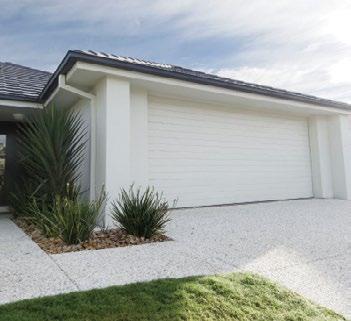
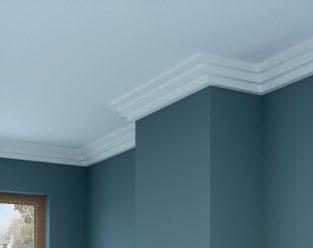
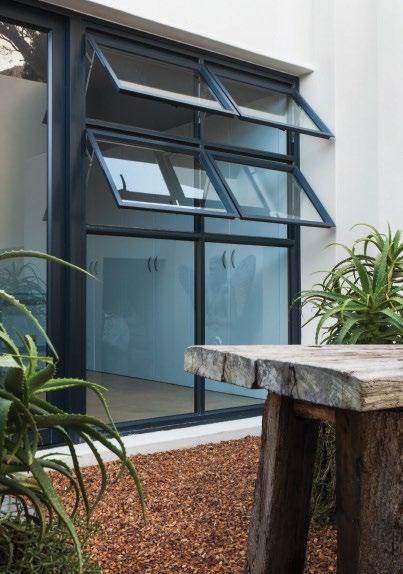
Call us on 086 110 2425 or visit swartland.co.za to view our ranges.


A living room is often said to be the heart of a family’s home. A prominent English furniture designer and supplier makes some suggestions about how to make it look great.
As the living room pumps life into both private and social life, many seek that special look and feel for that important space. However, achieving that perfect balance of comfort and aesthetic is no easy task. With that in mind, London-based home furnishing experts Englanderline (www.englanderline. com) shares specialist tips around the topic of arranging a dream living room.
Think about what furniture is best for you. Do you need cosy, modern living room furniture or would you prefer something fun and vibrant? Preferences will inevitably change from family to family, but it is important to accommodate what you envision before anything else. Thereafter, consider using the following tips.

Consider spacing. According to how big your living room space is, agree on whether you will need a big, small, or square couch in your living room. For example, if your room is large, it is obviously best to search for large living room ideas. What we ultimately learn from this is that spacing is imperative to your plan.
There are two types of spacing to be aware of: positive and negative. Positive spacing is where your furniture will go, whilst negative spacing is the empty space left in the room. Considering spacing is ultimately beneficial because it allows you to visualise what should go where.

Avoid facing everything towards a television. One way to do this is by arranging your seats in either a U-shape or an L-shape. These types of arrangements work well for directing one’s eye to another prominent feature of the living room, for example, the fireplace.
Do not let technology dominate! As we live in the 21st Century, technology is pretty much unavoidable everywhere we go. Most family living rooms tend to include a flat screen or other tech. We advise you to include technological devices in your living room as needed, but not to allow them to dominate your spacing. Instead, if you have the spacing to allow for it, arrange for some built-in shelves to put your devices on.
Grab your guests’ attention – Of course, we agree that comfort comes first. However, if you want to grab your guests’ attention from time to time, and you do not own the luxury of a fireplace or another architecturally attractive feature, you can turn to custommade cabinets or sideboards. Perhaps they can help to hold a collection of ornaments, or indeed any objects of personal importance. Either way, with them being there, you have added that little bit extra to your ideal living room.
Always consider measurements. Remember to bear in mind that if you are planning to add specific objects to your cabinet, you need to make sure that they will fit. Measuring these objects is a very simple step, but it is one that many people forget. Also, be sure to note the difference in height between the shelves of your cabinet.
Do not be concerned about size proportion and don’t panic if you feel that the cabinet’s size is disproportionate to the rest of the room. Woodwork can look deceivingly larger when empty.
Then, consider the packing and arranging. Try not to put same-scale scale items side by side. By doing this you will create a stimulating effect that both you and your guests will love.

Considering spacing is ultimately beneficial because it allows you to visualise what should go where.
In these challenging economic times, it's essential to find creative solutions to transform your living space without straining your finances. Whilst a complete makeover might seem like an expensive endeavour, there are several cost-effective strategies that can help you revamp your rooms without breaking the budget.
Sam Bartlett|Pressportal“With the cost-of-living crisis and interest rates spiraling, it’s not surprising that, for many people, renovation and decoration have been relegated to luxury status,” says Cobus Odendaal, CEO of Lew Geffen Sotheby’s International Realty in Johannesburg and Randburg.
“However, we all deserve to love our homes and be happy in our space and how they look is also especially important if you’re thinking of selling your property any time soon.”
Therefore, by implementing the following innovative but costeffective strategies – along with a dollop of creativity – it’s possible to totally revamp any room without breaking the budget.
Before committing money, take a moment to reassess your current room layout. Simply rearranging furniture can make a significant impact on the overall feel of the space. Experiment with different configurations to maximize functionality and create a more open and inviting atmosphere.
Additionally, decluttering and organizing your belongings can make a room feel more spacious and aesthetically pleasing, all without spending a too much.

One of the most affordable ways to breathe new life into a room is by giving it a fresh coat of paint, to the point of even changing the colour scheme. Repainting the walls or adding wallpaper can instantly transform the ambiance and give the space a fresh look.

Opt for light and neutral tones to create an illusion of a larger space, or experiment with bold and vibrant colours to add personality and flair. By investing in quality paint or wallpaper, you can achieve a dramatic transformation at a fraction of the cost of a full renovation.
A statement wall can instantly redefine the look and feel of a room. Instead of repainting or wallpapering the entire room, focus on a single wall as a focal point. Choose a bold and eye-catching colour or opt for removable wallpaper to create a stunning feature wall.
This cost-effective technique can add a dynamic element to your space and make it feel refreshed and updated without the need for a full-scale renovation.
Maximise the functionality and aesthetic appeal of your room by incorporating smart storage solutions. Look for budget-friendly options such as decorative baskets, wall-mounted shelves, or floating shelves that can help declutter and organize your space.


Use under-bed storage boxes or storage ottomans to maximize space in smaller rooms. By keeping your room tidy and well-organized, you can create a calm atmosphere of tranquillity.
DIY furniture makeovers
Transforming your furniture through do-it-yourself projects can breathe new life into your room without spending a fortune. Consider repainting wooden dressers, tables, or chairs to give them a fresh and modern look.

Experiment with different colours and finishes to match your desired style. Adding new hardware, such as knobs or handles, can also create a significant impact. With a little creativity and elbow grease, you can completely transform your furniture at a fraction of the cost of buying new pieces.
Thrift stores, flea markets, and online marketplaces offer a treasure trove of unique and affordable items that can transform your room's appearance. Explore second hand furniture, vintage accessories, and decorative pieces that add character to your space.
Consider upcycling or repurposing items to give them a fresh look. For example, repainting old frames and using them as artwork or transforming vintage suitcases into stylish storage containers. These budget-friendly options can inject personality and charm into your room's transformation.

Nature-inspired elements can bring a breath of fresh air into any room. Incorporate plants and flowers to add a vibrant touch and create a calming and inviting atmosphere.
Indoor plants not only improve air quality but also provide a natural aesthetic that can instantly transform a space. Consider low-maintenance plants such as succulents or spider plants if you're new to plant care.

Lighting plays a crucial role in setting the mood and atmosphere of a room. Instead of investing in expensive light fixtures, consider creative lighting alternatives that won't break the bank. String lights or fairy lights can add a whimsical touch to any space.

Use floor or table lamps to create warm and cosy corners. Adding dimmer switches can provide versatility and allow you to adjust the lighting according to your needs. These affordable lighting solutions can transform the ambiance of your room while being costeffective.
Incorporate textiles and accessories strategically to transform the look and feel of your room. Affordable options such as throw pillows, blankets, curtains, and rugs can add texture, colour, and style. Mix and match patterns and textures to create visual interest and elevate the overall aesthetic. Look for sales or discounted items to keep within your budget. By updating these smaller elements, you can achieve a significant transformation in your room without spending a fortune.
“Transforming a room on a tight budget is not only possible but also an opportunity to showcase your creativity, personality and flair and a great way to make your house stand out from the rest if you’re putting it on the market,” says Odendaal.
Bear in mind that small changes can make a big difference, so unleash your imagination and create a space that reflects your personal style while being mindful of your budget.


There are many ways to give a tired kitchen a new lease on life, writes Stephanie
Forbes of the Kitchen SpecialistsAssociation (www.ksa.co.za).
Stephanie ForbesDeclutter!
KSAFirstly declutter – a traditional big clean out is vital –get rid of kitchen items you don’t need and maybe take the opportunity to repurpose some old items. There are a lot of clever storage solutions that can be retro fitted and can help you keep your drawers and cupboards well organised and accessible.
However, if your need for more storage is so great that you consider adding a few more kitchen units to your existing ones then please bear this in mind – it is almost impossible to colour match old cabinets to new as the original finishes have been altered by exposure to sunlight and the food residues created when cooking.

Also, most kitchen companies avoid doing these types of additions because they almost always lead to disappointment. The company has no real idea what they are working with until they get going and working with compromised quality boards that have been in situ for many years can be tricky and lead to problems.
Another viable option would be to add a freestanding unit to the kitchen – make this a feature piece of furniture that can add character as well as additional storage.
These days replacing your kitchen surfaces is a viable option. Providing that you use a seasoned fabricator with a good reputation, old tops can be removed with minimal damage to walls and cupboards.
If you have splashback or wall tiles, this does make the replacement more challenging. But new contemporary work surfaces can totally transform the look and feel of your kitchen.
Another feature that can date a kitchen are handles. If your kitchen cupboards have handles or knobs that are dating it, you can easily replace them with something more contemporary. The only important thing to do is to match up the screw holes to ensure you don’t have to patch or drill.


One of the best and easiest ways to change up your kitchen is with a lick of paint. A new wall colour can change the feel of the space.

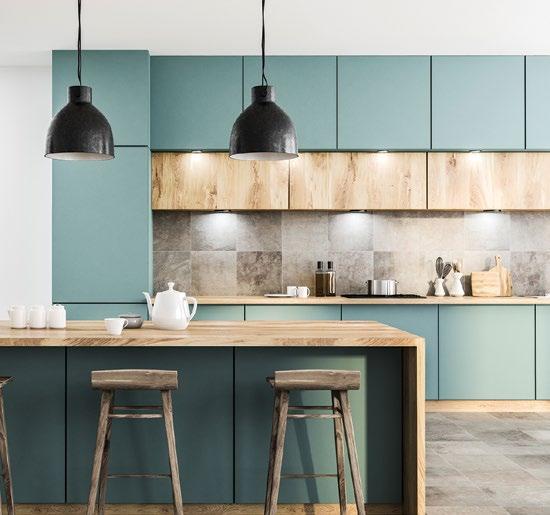
It is vital that you remember a few key rules when choosing that colour though. Your choice of colour will affect the sense of space. Dark colours absorb light and make a space seem smaller. At the moment dark greys, blues, greens and blacks are popular but should only be used in a space with a lot of natural light, big windows or a skylight; or in a large room that you are looking to make feel cosier. The use of a dark colour can be very dramatic. If opting for darker colours, make sure you invest in good lighting for accent, mood and general purposes.
By opting to work with neutral and natural shades, you are making the kitchen more accessible to a wider audience. However, sometimes the lack of colour can make a space seem cold and stark and very large. Sticking with mostly light and neutral shades works very well in a small space. The colours reflect the light rather than absorbing it, increasing the sense of space. Remember to use a quality paint that can easily be washed and that is resistant to the build-up of grease and can handle steam.
For a ‘pop’ of colour consider creating an accent wall. When selecting your accent colour, remember that colour affects mood. Reds, oranges and yellows generate warmth, energy and a cosy feeling. While greens, blues and mauves tend to give a relaxed, cool and calm feeling.
Depending on what finish is on your existing cabinet you can choose to repaint them. This is something not to be undertaken lightly as it requires the base cupboard to be properly prepared – it may need sanding, it may need a primer, or it may need specialised paint. If this is something you are considering, we suggest you do your homework and if possible, use the services of a paint specialist who has experience in this kind of work.
An appliance upgrade can also give the kitchen a lift. Even if you just focus on ‘smalls’ you can make a big difference. There are a wide range of colourful and stylish ‘smalls’ on the market now and when well-coordinated with wall colour and soft furnishings they can make a real statement.

While all the above can be undertaken DIY we would still recommend that you get your supplies from a KSA Supplier member to ensure that even with a simple facelift you have KSA support and recourse if something goes wrong.
If you decide, after the initial spring clean, that what you really need is a new kitchen then we recommend you visit the KSA’s website and go to the kitchen info page where you will find advice and guidance on everything from prepping for a new kitchen, setting up your budget, avoiding mistakes, choosing finishes and more.
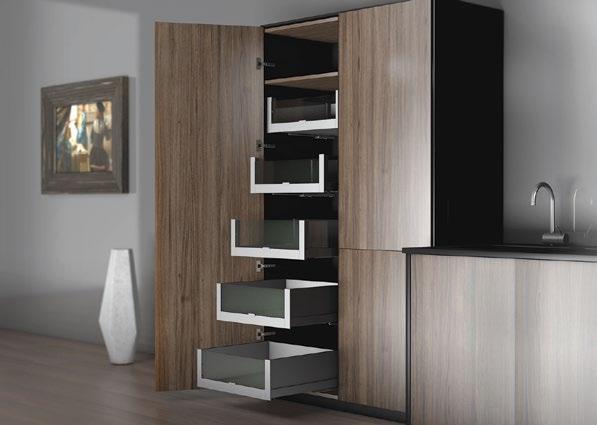
Then visit our members page to see what KSA members operate in your area. Lastly, remember that the KSA team is available on phone or email to help you with free advice and guidance to ensure you end up partnering with a company that will understand your needs and deliver you your dream kitchen.






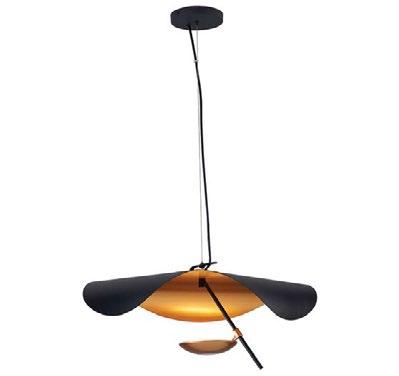




TO BUILD’s editor ran into ace chef Jade de Waal of Food Jams fame (www.foodjams.co.za) at Decorex Cape Town, and in between much food being demonstrated and eaten, we managed to get her to comment on her “must-have” kitchen appliances or accessories.

A chef’s knife & knife sharpener: My favourite tool is from Kitchen Samurai, and Neil is an expert in the wonderful world of Japanese knives (www.kitchensamurai.co.za).
A hibachi: I have lovingly renamed this a Japanese braai. Instant braai anywhere, even indoors with special binchotan charcoal!

A set of earthenware pots and urns for slow cooking made by a local ceramicist. Make a fire in the ground and cook your tagine or potjie using clay pots!
A combo of wooden, marble and stainless steel kitchen countertops: I know this sounds nuts, but having different kitchen types of kitchen surfaces gives you more range and room to play. Having options, like marble surfaces for working with delicate pastry, or wooden surfaces for kneading bread or pasta dough, has been a game changer.
A wood fired pizza oven: Besides beating loadshedding, a pizza oven is my kitchen's secret weapon and my best investment. The heat distribution and flavour contribution to everything from pizzas to whole roasted fish,or simply caramelised onions, is mind blowing every time.
“My dad makes the best Caesar salad in the pizza oven! Everything is woodfired, except the leaves which are picked from the garden” she shares.
What’s a hibachi?
It’s changed a bit since Americans began to adopt the appliance in numbers, so a modern definition per Wikipedia explains: Especially in the US, hibachi refers to a small cooking stove heated by charcoal (called a shichirin in Japanese) or to an iron griddle to cook food (called a teppan in Japanese).
Strictly speaking, the original hibachi is a brazier which is a round, cylindrical, or box-shaped, open-topped container, made from or lined with a heat proof material and designed to hold burning charcoal of a special durable kind.
It goes without saying that a hibachi must never be used in airtight rooms such as those in western buildings, without adequate ventilation.
Reliability is at the heart of our industry, and our Professional range is no different. Product innovation coupled with our value added services gives you a distinct advantage.
Our complete coating system, spanning preparation, trim, wall and textured coatings, is designed to ensure guaranteed product performance and value from start to finish.

All Plascon Professional products with the Ecokind logo have VOC levels within the GBCSA standards for Green building ratings. Designed for professionals. @PlasconSA @PlasconSA @PlasconSA





With the change in seasons and rise in temperatures come the delights of the outdoors – something all South Africans miss dearly during the colder months. From the early days of spring, we begin to enjoy the sunshine with family braais and gatherings of friends.
Plascon
“Summer is all about outdoor living,” notes the Head of Decorative Marketing at Kansai Plascon, Suvasin Moodley, “but we often find that homeowners shy away from leaning into brighter, summer-inspired colours for their outdoor spaces because they’ve been told that colour is a no-go.”
In addition, outdoor spaces like patios are often decorated in neutral colours because homeowners fear the fading power of the elements. Luckily, UV-resistant paints such as Plascon’s Micatex ensure that the beauty of a colourful wall stays that way. An extremely durable premium-quality waterbased coating with a fine-textured matte finish ensures that products like these are suitable for application on all exterior surfaces, from PVC gutters to cement plaster to brickwork and more.
The latest style
Colour plays a pivotal role in uplifting spaces and improving our mood. Take inspiration from Plascon’s Summer Colour Palette and bring heat and character to outdoor spaces with Earthy Coffee Shop (O2-D1-2) and Baked Earth (O4-B1-1), two hues that pair perfectly with rattan furniture and traditional woven textiles.
If you’re looking for a bolder aesthetic for an outdoor entertainment area, try the conversation-starting blue of Granada Bay (B1-A1-3) or the sophisticated natural purple of Berry Light (P6-D1-3). And Yellow Mystery (Y4-B2-1) would make the perfect neutral backdrop for the rich, muted blue of River God (B2-D1-2).
Remember, strong colours look even better in natural light. Luckily, the standard range of Micatex colours can be expanded to cater to personal preference as Micatex can be tinted into any of the colours in the Plascon Inspired Colour (PIC) tinting system. This season it’s all about imparting the joy of summer into your outdoor spaces in a long lasting way.
Another key step to ensure your exterior walls withstand the summer heat is proper preparation. A water-based grey plaster primer will save you both time and money while at the same time ensuring a bolder topcoat colour. Moodley recommends Plascon first-inkind, MasterPrep, for this application.
Such a water-based, low-VOC, grey primer offers superior priming performance for new interior and exterior cement plaster, concrete, porous brickwork and various types of building boards.
Moodley adds that their product even out porosity, providing excellent adhesion for the topcoat. It’s breathable, allowing moisture to escape, and it’s extremely quick drying, ready for an overcoat in an hour. These qualities not only enhance the colour and finish of the topcoat, they also reduce overall time and labour costs.
“So it's a win-win: by combining MasterPrep with a Plascon Micatex topcoat, you won’t have to sacrifice the vibrancy of your chosen colour” she says.
So, this season, it’s all about imparting the joy of summer into your outdoor spaces in a long lasting way – say farewell to the monotony of white and beige walls, and welcome the charm and allure of colourful facades that can withstand the elements.
“With the right prep and quality coatings, it is more than possible to keep up with the season’s colour trends and bring joy to outdoor living,” Moodley finishes.
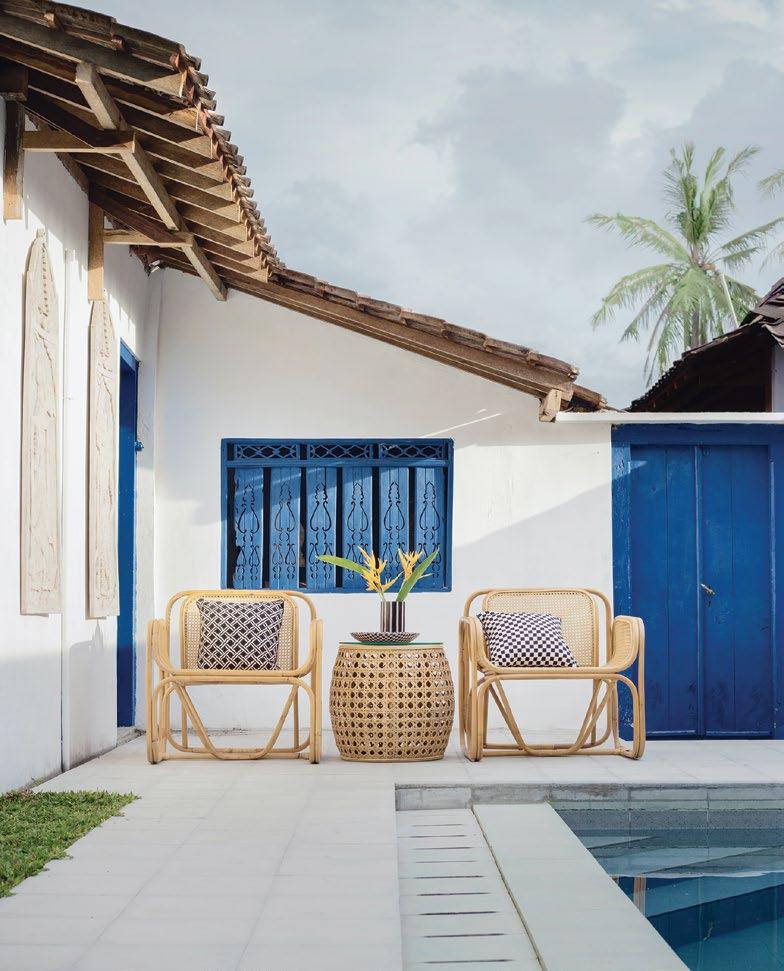
With the world becoming more environmentally and health sensitive, there is a fast-growing demand for green products. More than ever, we are driven to meet the demand of our future-orientated generation, advises a South African coatings manufacturer.
VOC content, sustainable, biodegradable, eco-friendly, recyclable, renewable, low carbon footprint, net-zero, natural and other terms are now predominant in our daily vocabulary.
ProNature (www.pronature.co.za), a local coatings manufacturer, says it employs the latest knowhow and processes to guarantee technically advanced products from mother nature’s offerings. It has been on a mission to successfully create environmentally sound products for the last 25 years, constantly following European standards. In all this time, ProNature has stuck to their green guns, despite the hesitance of the industry towards natural alternatives to conventional finishes. The time has come and the demand by architects, designers, and end-users for such products is now increasing rapidly.
ProNature’s manufacturing ecological footprint is less than a quarter of a conventional manufacturer; in figures, the embodied energy of conventional wall paint is 88.4 MJ/kg compared to 15-20 MJ/kg for ProNature’s natural coatings.
The wood finishes are easy and safe to use, and maintenance is bliss. ProNature offers a great variety of supporting products, like wood reviver, timber bleach, ebonizer, pre-stains, as well as waxes and cleaners for wood, stone, and many other surfaces.
• Purely plant-based raw materials and mineral pigments, free of synthetics and petrochemicals, VOC free and biodegradable.
• Stain and seal in one product, offering 60 standard colours to choose from.
• ProNature indoor and hard wax oil are safe for kitchen items (including butcher blocks) and any timber products around babies and children, e.g., toys, cribs.

• ProNature Outdoor is suitable for all exterior structures, e.g., furniture, windows and doors, pergolas, decks, jungle gyms, cladding.
• You can achieve a coverage of up to 20-30m2/litre per coat. Please note, this does depend on the type of timber, porosity and finishing grit.
• One coat suffices on non-traffic surfaces.

• Easy application: wipe on-wipe off, no sanding in between coats nor before the maintenance treatment.

• The products have a long shelf life, and a limited pot life once opened.
The products are available in the wood coatings section of various hardware and paint stores. “Follow the green logo and flowery paint brush. Alternatively, you can buy from them directly. Their interior wood and wall paints are available ex-factory only” adds the press release.

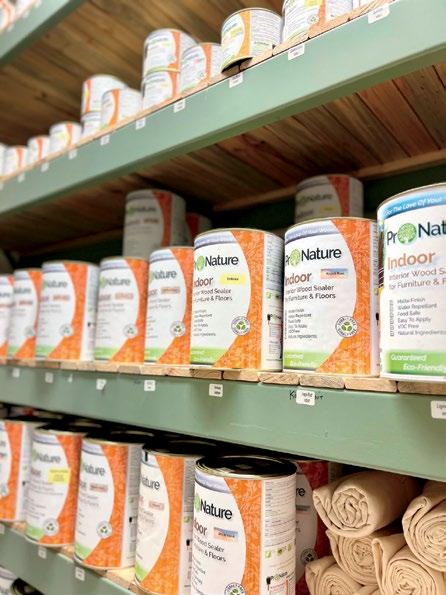





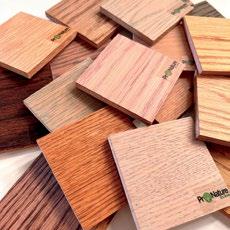

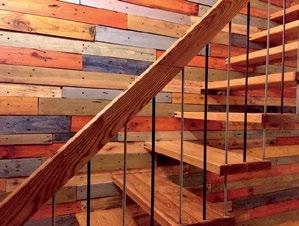
Interior flooring is an essential aspect of home design, serving both functional and aesthetic purposes. Over the years, flooring options have evolved significantly, offering homeowners a wide range of choices to enhance their living spaces. From traditional materials to innovative solutions, let's look at evolution and trends in interior flooring in homes.
Gareth Griffiths



With the advancement of technology, synthetic flooring options emerged, offering increased affordability and a wider range of design possibilities. Vinyl flooring gained popularity in the mid-20th century, providing a cost-effective alternative to natural materials. It offered durability, easy maintenance, and a variety of styles, including vinyl sheets, tiles, and planks.

Homes or dwellings through the ages have been built using traditional flooring materials such as hardwood, stone, and ceramic tiles. They were durable and provided timeless charm. Hardwood flooring, known for its natural beauty and elegance, graced many homes. Stone flooring, like marble or slate, added a touch of luxury and sophistication. Ceramic tiles offered versatility, with countless patterns and colors to choose from.
In the quest for comfort and coziness, carpeting found its way into both residential and office flooring. Soft underfoot and available in an array of colors and patterns, carpets provided warmth and sound deadening. Maintenance required, including regular cleaning and concerns about allergens, led to further evolutions in flooring concepts.


Acoustic carpets are specifically designed to minimize noise transmission, making them an ideal choice for areas that require sound insulation, such as bedrooms, offices, and entertainment spaces. These carpets help create a quieter and more peaceful living environment, reducing sound reverberation and improving overall acoustics.
As environmental awareness grew, building owners and homes began to seek flooring options that were more sustainable and eco-friendly. This led to the rise of bamboo and cork flooring. Bamboo, a fast-growing and renewable resource, offered durability and a unique aesthetic appeal. Cork, made from the bark of cork oak trees, was not only sustainable but also had natural insulating properties and a soft feel underfoot.
With growing emphasis on sustainability and the drive towards net zero carbon, designers and homeowners are exploring eco-friendly flooring options. Reclaimed wood flooring, salvaged from old buildings, gives a unique character to spaces while reducing waste. Recycled glass tiles and terrazzo made from recycled materials are also gaining traction. Furthermore, renewable options like linoleum, made from natural materials such as linseed oil, offer both durability and sustainability.
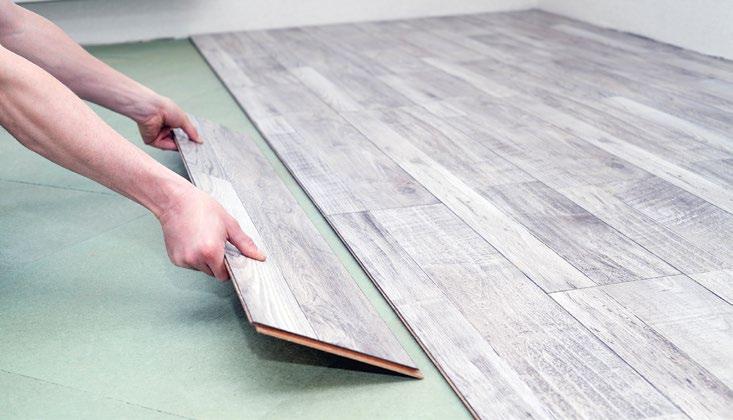
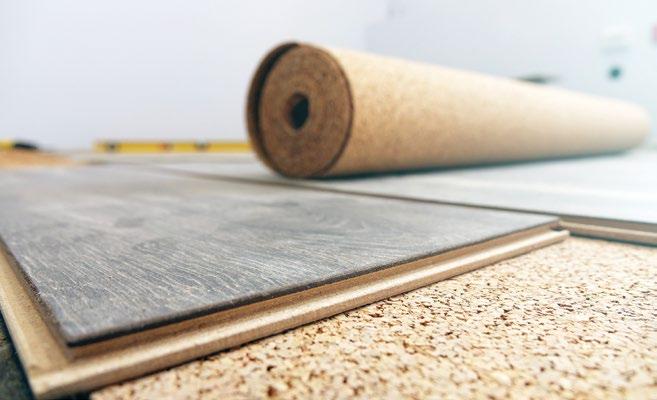
Nowadays, designers and homeowners are spoiled for choice. The evolution of interior flooring in homes has witnessed a remarkable transformation, offering an extensive range to suit differing needs and preferences. From traditional materials to modern innovations and sustainable solutions, flooring has become an integral part of interior design, combining functionality with aesthetic appeal.
As technology continues to advance and sustainability remains a priority, the future of interior flooring holds exciting possibilities for homeowners seeking to enhance the beauty and functionality of their living spaces.
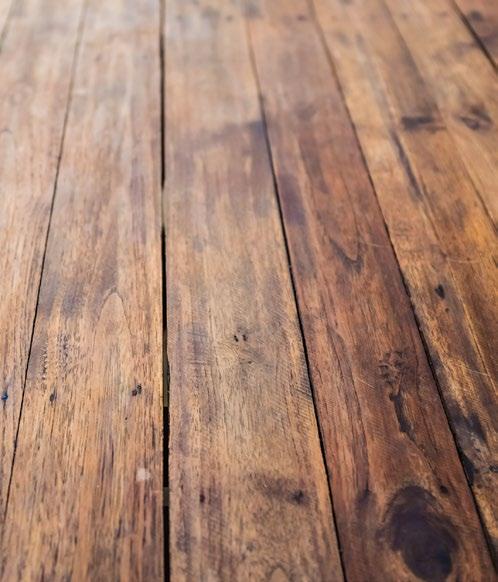
Advancements in technology and design heralded a new era of flooring innovations. Engineered wood flooring combines the beauty of hardwood with enhanced durability and stability. Laminate flooring, with its realistic visuals and ease of installation, has become a favoured choice. Additionally, luxury vinyl flooring (LVT) has gained popularity due to its water resistance, durability, and versatility in mimicking various natural materials.
As technology continues to evolve, smart solutions have made their way into the carpet industry. Smart carpets incorporate sensors and embedded technologies to monitor various aspects of the living space. For example, some smart carpets can detect changes in pressure or movement, providing alerts in case of falls or monitoring sleep patterns. These innovative carpets not only add a layer of functionality but also contribute to the overall safety and well-being of individuals within the home.



What makes a great floor? Stunning good looks? Comfort underfoot? Easy care and cleanliness coupled with eco-friendly benefits? Easy installation? Performance under pressure? Durability, wear and warranties?
Eva-Last, a leading international composite building materials manufacturer, has combined all the characteristics of your ultimate flooring wish-list to produce two new ranges of TIER flooring: TIER Classic and TIER Elements.
Designed to be fabulous, functional and forever, TIER flooring is a Stone Polymer Composite (SPC) flooring that is able to recreate the natural warmth and texture of timber without the environmental impact of deforestation. Put simply, it’s a luxurious, low-maintenance and easy-to-install indoor flooring material with a unique ground mineral polymer CarbideCore that provides enhanced rigidity and stability as well as makes TIER flooring both heat and waterresistant. The TIER Element range carries a five-year commercial and 25-year residential warranty.
TIER Element - European Oak TIER Classic - Restored fir silver“With the introduction of TIER’s two new ranges, we are geared to exceed all expectations and meet the specifications of both commercial and residential environments using the latest advanced material technology,” says Shelley Galliver, Director Marketing & Brand.

Produced in an eco-conscious factory, TIER is manufactured using solar energy, what’s more, no harmful volatile organic compounds (VOC’s) such as glues or adhesives are used during production, keeping the air safe and hygienic. In fact, TIER is accredited by FloorScore for outstanding indoor air quality. This means we are producing a holistically sustainable product. TIER flooring is also safe to be installed in any environment, boasting a EuroClass Bfl-s1 fire rating.
The introduction of the two ranges accommodates a variety of flooring requirements. The TIER Classic range is designed for versatility as well as durability and is ideal for residential applications. Featuring a 4.3mm profile which consists of a 4.0mm CarbideCore and a 0.3mm wear layer, TIER Classic provides an AC3 wear rating which is suitable for residential use. With a 25-year warranty, TIER Classic offers a cost-effective, robust flooring that installs efficiently with its 2G click system, enhancing the functionality and style of residential properties around the world.
The TIER Element range provides a more robust profile, that emulates the beauty of wood with advanced digital print technology and EIR surface embossing. This means real timber scans are printed directly onto the SPC core and includes a wear coating. The in-line registered embossing ensures the texture perfectly mirrors the grain of the timber.
This advanced technology results in a minimal repeat pattern for up to 20m2. TIER Element is a 6.5mm profile comprised of a 5.35mm CarbideCore with a 0.15mm print and wear coating. This is combined with a 1mm IXPE layer that offers greater sound suppression and a softer feeling underfoot.

With an AC4 wear rating, TIER Element is suitable for use in both residential and commercial applications. Its 2G click system prevents moisture ingress through the joins
and is easy to install. The TIER Element range carries a five-year commercial and 25-year residential warranty.
“We think of TIER as so much more than just flooring, as we want to surpass peoples’ aesthetic expectations and safety needs while also offering ease of installation, and above all provide a technically sound product that is good for the environment. It gives TIER a lot to live up to, but we are confident it does just that,” concludes Galliver.
 TIER Element - Hickory
TIER Element - Hickory
roofs
walls;
RubberRoofs™ manufactures our own products and demands to be part of the process from start to finish. By taking on the entire process, we avoid any grey areas and can guarantee quality work and after-sales services as well as product warrantees that are close to none.
RubberRoofs™ carries the whole warranty from product to application, and our proven commitment to the client, has made RubberRoofs™ The Trusted Name in Waterproofing™
We strive to make any roof as-good-as-new!

We are the Trusted Name in Waterproofing™ and a trustworthy Dulux approved applicator. We are also the sole importer of KÖSTER™ Waterproofing products and only associate with the best in the business.
RubberRoofs™ take on roofs that are looking worse for wear, and showing signs of leaks, mould, and deterioration. Replacing a roof can be a costly endeavour. Instead, save money, extend the life of your roof and increase the value of your property through our roof restoration and renewal services.
RubberRoofsTM boasts an array of highly adhesive and expertly formulated Liquid Rubber PaintTM and other roof restoration and waterproofing products, which can be applied to various substrates, including tiled roofs, metal roofs, asbestos and concrete.
RubberRoofsTM promises an impenetrable barrier with each application – using the best quality raw materials, designed to exceed its warranty as efficient waterproofing sealants. We also aim to use environmentally conscious products that are lead-free, have a

low VOC, and are dispatched in recycled and recyclable packaging.
Placing focus on South Africa’s vast coastal areas – we provide AlgenTech™ for the sanitation of your roofs’ surface.
Before we can apply our exceptional liquid rubber waterproofing, we need to ensure the roof is clean and treated so that our products can perform to the highest quality standard.
Coastal and Southern regions have 100% algae, fungi or moss prevalent. RubberRoofs™ applicators sanitise the surface with AlgenTech™ in the preparation stage – cleaning away all moss, fungi and other micro-organisms growing on the roof. AlgenTech™ XE Protect, our dry state microbial fungus and algae attack protector, is then added to the Liquid Rubber Paint™ to
inhibit future organism growth. This process considerably lengthens the lifetime of waterproofing.
RostTech™ Rust Treatment converter is our expertly formulated, full function, water-based rust converter, with structured polymer primer. With thorough preparation, RostTech™ Rust Treatment penetrates deeper than standard converters into rust and converts rust into a stable, inert ferric phosphate compound.
Alongside RostTech™ Rust Treatment Converter, RubberRoofs™ also provides RostGuardTM – RubberRoofs™ RostGuard™ is a latest technology, nontoxic, water-based anti-corrosive primer. RostGuard™ is used as a top coat primer on mild steel and galvanized iron, to effectively prevent rust creep.
Adding to our repertoire, RubberRoofs™ specializes in advanced asbestos roof sealing. Asbestos fibres become loose with weathering and is a health hazard. RubberRoofs™ AsbestoSeal™ is formulated to encapsulate and bind asbestos fibres. AsbestoSeal™ is also formulated with moss, algae and fungal growth inhibitors. By using this product, you prepare your asbestos roof for paint and/or waterproofing application which will ensure the longevity of your roof for many years to come.
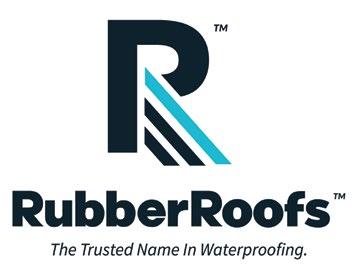
We have also teamed up with industry leaders such as KÖSTER™ Waterproofing Systems, to provide our clients with the best quality products and a perfect result with every application.
KÖSTER™ Waterproofing Systems boasts an array of technologically advanced and world
leading products including KÖSTER™ TPO Premium roofing membranes and KÖSTER™ Crisin 76 Rising Damp Horizontal Barrier.
KÖSTER™ TPO Premium is a highly specialized roofing membrane for professional use on freely weathered industrial roofs in lightweight construction. With its high sustainability, it provides economy and longevity for a modern and resource friendly building culture. All materials are recyclable, being friendly to the environment.
KÖSTER TPO is indestructible, with more than 40 years of proven durability on the roof, economical and easy to install. This product is safe and reliable with up to 25 years guarantee. It also offers more advantages: UV-resistant, root and rhizome, acid and kerosene resistant, recyclable, high tensile strength and elongation values, resistant to Microorganisms, low fire load – even direct laying on EPS possible, will not become brittle (no volatile plasticizers, no PVC).
KÖSTER Crisin 76 stops rising damp by hydrophobing its structure - modifying the surface tension to become waterrepellent (hydrophobic). KÖSTER™
Crisin 76 penetrates deeply into even the smallest capillaries and pores in building materials. Due to its very low density and lower surface tension than water, Crisin 76 Concentrate displaces the water in capillaries. Capillaries lined with Crisin 76 Concentrate are lined with resin and hydrophobic. The curing of the injected product is independent of the drying of the masonry and preventing rising damp.
A very thin, solvent-free, concentrated liquid synthetic resin.
KÖSTER CRISIN offers advantages such as: A 10 Year Warranty. It is applicable even in cases of high moisture and salt contents. It is fast acting and immediately effective. KÖSTER CRISIN remains flexible and the material´s action principle has been proven to be effective for more than 40 years.
KÖSTER CRISIN has an easy and seamless application and is suitable for new construction and repair of existing structures. It is a patented one-time installation with guaranteed success. It does not decay or decompose and acts neutrally. It does not affect steel reinforcement and is resistant to all of the usual corrosives in masonry, such as acids, alkalis, and salts. This product offers many more advantages to protect your structures from rising damp.
Being a Dulux approved applicator RubberRoofs™ can paint interior and exterior walls and roofs of any surface. We are approved to treat wood and apply any Dulux products.
Our professional team is ready to guide you through the entire process of rejuvenating and restoring your roof. Our in-house expert applicators will ensure the work is done right and your roof looks and functions like new.

Our specially trained liquid rubber applicator teams will restore and seal your roof, leaving it looking new, with a fresh coat of roof paint chosen from our assortment of roof colours and increase the value of your property greatly improved.

Winter and early spring are the perfect time for felling trees because all those bare branches make it easier to see what you're doing. But whether you are a seasoned professional or a homeowner, tree felling is a dangerous business that requires proper planning and the right working techniques to make sure it is done safely and effectively, writes Husqvarna (www.husqvarna.com/za).
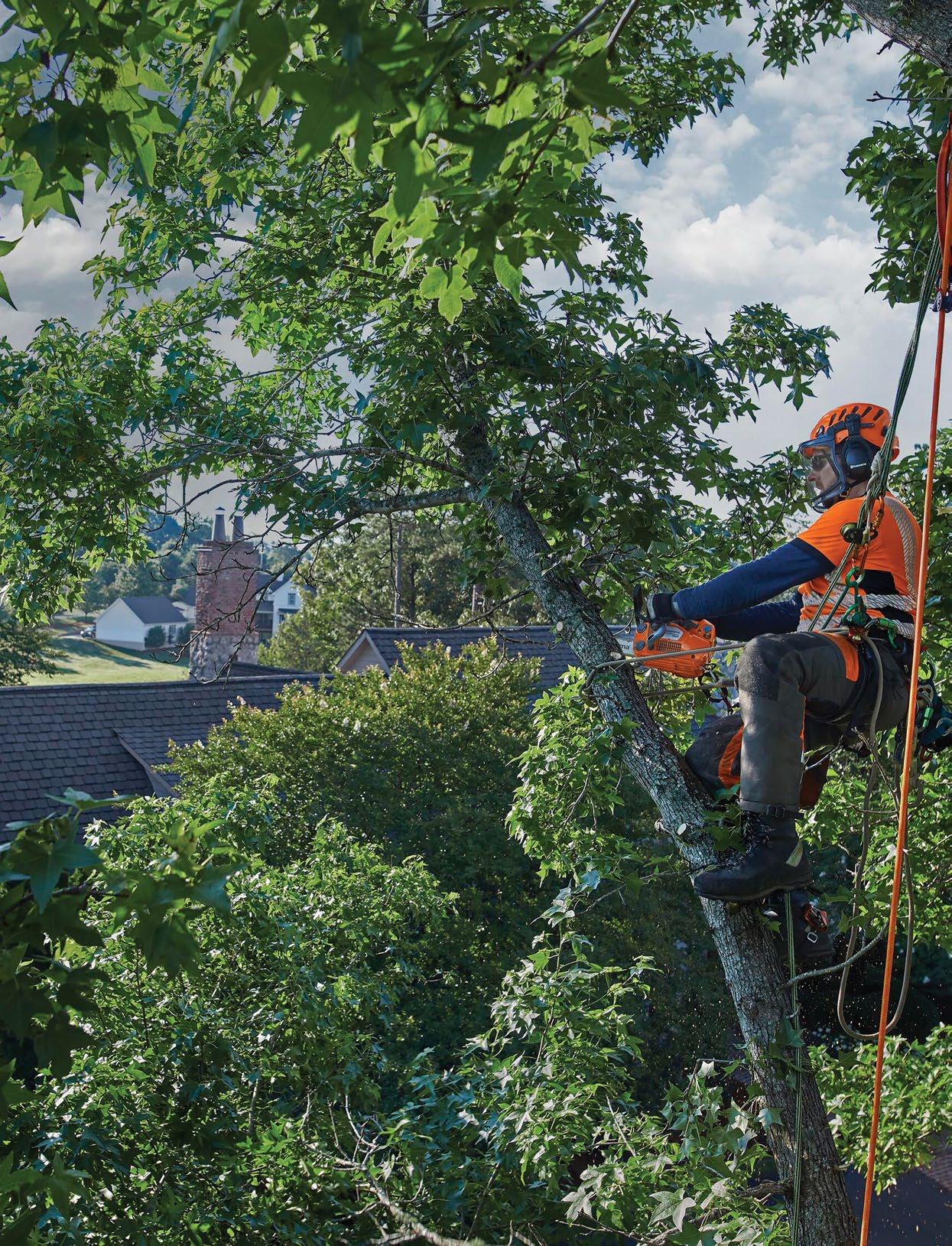
Charles Henderson, Husqvarna's Tree Professional Business Development Manager, has much to add on the topic: “Late winter/early autumn is the tree-felling sweet spot. The lack of leaves makes it a breeze for arborists and loggers to assess a tree's health, spot any potential issues and pick the right ones to cut down. Homeowners should also take advantage of this opportune time if they need to cut down any trees in their gardens.”
Remember though that the most important part of tree felling is safety first! Whether you're a pro or a first-time tree-feller, Henderson recommends following these six steps to complete the task with confidence.
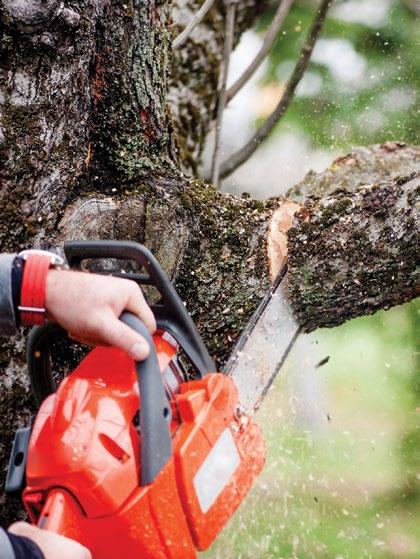

Before starting any tree-felling project, it's crucial to plan. Take a close look at the tree's surroundings and identify any potential obstacles that may interfere with the felling process. Consider factors such as the tree's size, shape and proximity to structures or power lines. This assessment will guide you in selecting the right tools and safety equipment needed for the job.
Hint: For bigger trees, a chainsaw will always be the most efficient and effective tool and it makes post-felling work a lot easier too.
Carefully study the tree and assess the direction in which it naturally leans. Additionally, take note of the wind direction, as this should align with the tree's natural lean to ensure a controlled fall. Clear the area around the tree and in the direction of the intended fall to create a safe working zone.
Before making the felling cut, it's essential to prune the tree's trunk by removing any branches and twigs up to shoulder height. This will ensure that you have a clean and unobstructed cutting path to enhance the safety and precision of the tree's fall.
1 2 3 4
If you are using a chainsaw, the appropriate cutting technique depends on various factors, including the tree's size, slope and the size of your chainsaw bar. There are different cutting methods using the notch, back cut and plunge (bore) cut techniques, best suited for specific scenarios. If you're unsure about the best approach, don’t chance it. Get advice from a professional.
Inspect the tree's timber and lower part of the trunk for any signs of rot or disease. A weakened or decaying tree can behave unpredictably during felling, posing significant risks. If you detect any structural issues, reconsider felling the tree and consult an arborist for expert advice.
Before starting the final cut, make sure you have a clear and safe path of retreat. This path should be at a 45-degree angle away from the direction of the tree's fall. Having a designated escape route is crucial for maintaining your safety during the felling process.

Henderson reiterates prioritising safety above everything else, adding, “Even with careful planning and preparation, tree removal can be hazardous. If you feel uncertain or uncomfortable with the process, hire a professional with the necessary expertise and equipment.”
He also emphasises the need to plant one or two new trees for every tree felled.
“This practice is essential for maintaining a balanced and thriving ecosystem. By planting new trees, we can offset the environmental impact of tree removal and ensure a sustainable future, keeping the cycle of tree planting and cutting in harmony.”
Decide the direction that you want the tree to fall because this is the side of the tree that you’ll cut a notch into. Use the following options:
The face cut: The face cut is done on the side you want the tree to fall and is done close to the ground. Carefully cut down into the tree at a 70-degree angle. The top of the notch should be the shallowest part of the cut, while the bottom of the notch will be the deepest area of the cut. Make a clean, horizontal cut at the base of the notch that you created. This cut will make the bottom of the notch straight. These cuts should not go more than 33% of the tree diameter.
The bore cut (plunge cut): This cut weakens the tree trunk but won’t cause it to fall over. Make a bore cut through the other side of the tree. Insert the tip of the chainsaw blade into the tree instead of cutting the tree from its side. Line up the chainsaw blade 2-5cm away from the edge of the notch cut, depending on the size of the trunk and push it right through the tree. Then continue sawing into the opposite direction of the notch until you make a clean horizontal cut through the other end of the tree. You then have a “hinge” of tree wood close to the face cut.
The back cut: The back cut or felling cut is made on the opposite side of the tree as the undercut and is cut through the base of the tree severing the “hinge” holding the tree up. Depending on the size of the tree trunk, wedges can be hammered into place on either side of the back cut, to ensure the tree splits evenly and falls in the right direction.







To Build’s intrepid plantlife writer, Wesley Soule, responds to our water-sustainable theme with some basics that all property owners can apply themselves in the garden, benefit the environment and save money at the same time.
As water scarcity has become an ever more pressing concern, waterwise gardening is a responsible and aesthetically pleasing solution. By using these drought-resistant plants, particularly those indigenous to South Africa, one can create a garden that thrives on minimal water while still showcasing the beauty of our native ecosystems.
Let's explore the advantages of setting up a waterwise garden, the diverse array of indigenous waterwise plants available in South Africa, and how these indigenous species can support local wildlife.

Environmental responsibility: Waterwise gardening is a sustainable approach that reduces water consumption, making it an environmentally responsible choice. As we adapt to changing climate conditions, conserving water becomes an essential part of our collective effort to preserve natural resources.
Ease of maintenance: A waterwise garden requires less maintenance compared to traditional gardens. With plants adapted to survive in your environment, you spend less time managing your garden and more time enjoying its beauty.
Resilient and attractive: Waterwise gardens can be just as visually stunning as traditional gardens, especially given the vast array of ingenious plants available. Our diverse local range of drought-resistant plants allows you to create a vibrant and captivating landscape that stands out even in the driest of conditions.
Less maintenance: Indigenous plants are naturally adapted to local conditions, they require less intervention to thrive. By incorporating these plants into your waterwise garden, you can reduce the need for pruning and fertilization. You can also use native soil that wouldn't support non-indigenous species, this makes it an affordable option.
Succulents: South Africa has a rich variety of succulent plants, known for their waterstoring capabilities. Species such as Aloe, Crassula, and Haworthia are excellent choices for waterwise gardening, adding local flavour and shapes to your landscape.

Indigenous shrubs and perennials: Indigenous plants are well-adapted to local climates and require minimal water once established. Consider species like Agapanthus, Kniphofia, and Protea, which showcase striking blooms while being waterwise champions.

Ornamental grasses: Grasses like Pennisetum, Melinis, and Eragrostis fit into all spaces around the garden, requiring little water to maintain their cover easily throughout the year.
Wildlife habitats: Indigenous plants offer suitable habitats for local wildlife, especially to attract birds. They provide food and shelter, promoting biodiversity in your garden and fostering a healthy ecosystem. You can create a garden that is a refuge for our amazing local bird life.
Pollinator attraction: Many indigenous plants are particularly attractive to pollinators, ensuring that your garden becomes a home for beneficial insects essential for plant reproduction and biodiversity.

Understanding microclimates: Different areas of your garden may experience varying levels of sunlight, wind exposure, and moisture. Observe these microclimates and plan your waterwise plants accordingly.
Shade-loving plants: Some waterwise plants prefer partial or dappled shade, making them ideal candidates for areas with less direct sunlight.
Wind-resistant plants: Select species that can withstand strong winds if your garden is in an exposed location. Plants like Fynbos species are naturally adapted to coastal winds.
Embracing waterwise gardening presents an opportunity to create a self-sustaining and low-maintenance outdoor space. By focusing on indigenous species, and considering different microclimates, you can curate a garden that thrives with minimal water while supporting local wildlife.
As we establish this garden, we create a connection between nature and our home, allowing the indigenous plants back into the space that they were cleared from. Waterwise gardening with local plants is a celebration of the beauty of South African flora and a return to a more natural system.

Wesley Soule is the owner and microbial specialist at SoilScopes that specialises in microbial testing of soils and compost for regenerative farming solutions.

The aim is to return to a more natural system that produces higherquality foods at lower costs to the large-scale or urban farmer. Providing better profit margins along with more ecologically based practices means the farmer is able to restore fertility back to the land. The result of this is less reliance on inorganic fertilizers, herbicides, pesticides, and fungicides. It is about embracing the system nature designed for plants to thrive in by removing harmful and costly practices which have no place in modern agriculture.
To find out more, contact Wesley on +27 74 616 0451, email Wesley@soilscopes.co.za www.soilscopes.co.za
Introducing Falcon Gas Cookers: the ultimate cooking companion. Crafted with precision engineering and highquality materials, our cookers provide accurate control and exceptional performance. With powerful burners, intuitive controls, and multifunction ovens offering up to 11 functions, cooking your favourite dishes has never been easier.
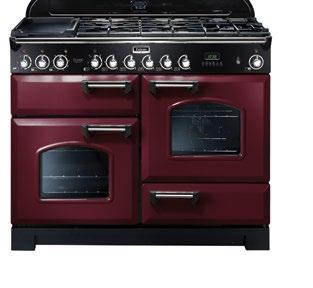



Upgrade your kitchen and elevate your culinary experience with our sophisticated and sleek range of gas cookers, designed to inspire creativity and deliver exceptional performance.


As summer approaches, enterprising property owners will already be focusing on ensuring that their plumbing is fit-for-purpose. These are the months of the year that plumbing works especially hard. With summer looming, Brendan Reynolds, the Executive Director of the Institute of Plumbing South Africa (IOPSA) shares some helpful advice with property owners.
Families are at home during the school holidays, and this is the best time of the year to invite friends and family over and to spend time at your home and in the outdoors. Therefore, toilets will be flushed more often, and more dishes and clothes will be washed during this period.
As summer approaches, garden taps will also be used more frequently to fill swimming pools and hot tubs and also to wash cars. However, most importantly, with the heavy rains on their way, plumbing also needs to function as intended to avoid clogged drains, flooded sewers and water blockages.
Reynolds suggests that the property owner should focus on the following:
Make sure that your gutters and downpipes are clean. Install a gutter guard to prevent leaves and other debris from entering and blocking them.
Gutters and downpipes fulfil an important role. They channel rainwater away from your house to appropriate areas on your property. This prevents water from collecting on your roof, causing it to deteriorate over time. Moisture in windows also causes condensation, which can damage the sill and interior walls, while allowing mould and grime to develop. Gutters and downpipes also stop water from pooling against your home’s foundation, which causes erosion and weakens the structure and foundation. It can also result in flooding, damp, mould and subsidence.
Also inspect your rainwater disposal points. Rainwater may not be disposed of into the sewer system, but many property owners do not know that it is illegal to do so. These connections remain a serious problem in the country as is evidenced by extensive flooding during heavy rain. This is because our sewer systems are being overwhelmed by rainwater which they were never designed to handle.
Furthermore, check if water pools near buildings. If so, consider installing a drain to keep water away from structures.
This is also the ideal opportunity to think about installing a rainwater harvesting tank on your premises. In addition to solving the problem, it will provide you with free water for irrigation, to fill your pool, and wash your car, to name a few.
IOPSA-accredited plumbers are increasingly being asked by property owners to help them to reduce their reliance on strained municipal resources. Installing rainwater harvesting tanks is one of the most cost-effective and quickest ways of doing so, while also reducing your water footprint and monthly water bill.

You will also want to check for leaks especially after the cold winter months when pipes burst, another important reason to start inspecting your plumbing at this time of the year.

Keep an eye out for damp or green patches on the lawn – a clear sign that water is leaking out of faulty pipes.
To make sure that there are no leaks on your premises, close all the taps and then check your water meter, recording the reading. Take a second reading after about an hour. If the reading has increased without use of toilets and taps, you know that you have a leak on your property that needs to be dealt with by a qualified plumber.
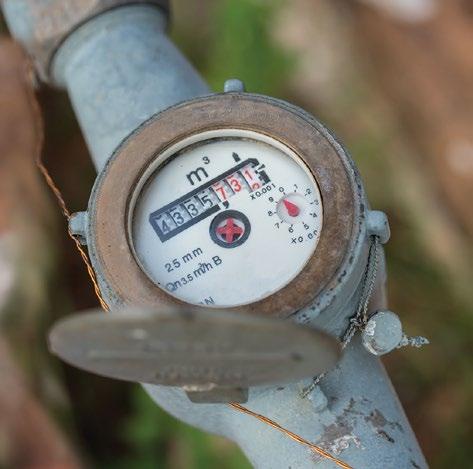
Swimming pools are water intensive, increasing water consumption on a property by as much as 8.85kL/month or 37.36%.
Do not forget to inspect for blocked drains. They may become partially blocked, but you will not notice this until the rains arrive and water fills the pipes. Ask an IOPSA-accredited plumber to inspect your pipes with a camera, and jet clean the drains if there are any blockages.

You will also want to test your irrigation system, including the timer and garden taps. Importantly, pay attention to leaks. Bear in mind that a dripping tap can waste up to 30 litres of water an hour. When multiplied over thousands of leaking pipes and taps, this is a major loss of water in a country that can ill afford this type of waste.
Remember to also check on your pool and hot tub, which will be used extensively this summer. Pay specific attention to leaks and test the system, especially timers.
As a responsible citizen, you will be able to use water more efficiently by installing a backwash tank to collect and reuse backwashed water. Bear in mind that swimming pools are water intensive, increasing water consumption on a property by as much as 8.85kL/month or 37.36%. An IOPSA-accredited plumber will be able to assist you with this and other ways of improving water use on your premises.
Committed to ensuring quality plumbing workmanship, IOPSA (https://www.iopsa.org/) is the largest industry body for the South African plumbing industry.
















As the country struggles to normalise its power provision, it is encouraging to see how many businesses and homes are moving to renewable and alternative energy resources to substitute and stabilise energy demand and usage. There is good news in this, writes Mark
Freemanand
Nishandra Baijnath,both from Schneider Electric.
By and large, most of the renewable energy installations, particularly solar, are performing when it comes to realistically delivering on the promised returns whilst transitioning to a greener source of energy. The market is becoming more educated, and the playing field competitive, as more providers emerge to meet the demands of this burgeoning industry.
But what about the early adopters, those businesses and even homes that started implementing renewable energy resources
after South Africa first experienced its daily loadshedding in January 2008?
The subsequent fallout of 2008 also saw dramatic hikes in power cost, which again encouraged businesses to use solar and other renewable resources whilst relying on fossil fuel power generators as alternative sources of energy to ensure continuity of business operations.
Fast forward to 2023 and these renewable sources such as solar arrays are no longer
just a valuable cost saver but also an integral part of keeping businesses running. This coupled with a genset (diesel generator) of some sort ensures that the business can power through the rolling blackouts that have become the de facto standard, however, this is also where we hit a snag.
Many of these systems are not equipped to seamlessly switchover from the grid to solar supply without some form of interruption; or to optimise the use of the genset to reduce fuel consumption.
Consider this: your local shopping centre goes pitch dark for a few minutes every time loadshedding starts and then the reverse when the grid returns. This is due to the lag caused by operation to the automatic changeover unit to swing the load from the grid to the genset and then back again.
A genset is used to provide the critical voltage reference for the solar system but often the PV system does not communicate with the genset to reduce its output when the solar PV system takes over managing most of the load.
This is frustrating and unnerving and also harmful to equipment as the interruption in power supply inflicts havoc on PoS systems, HVACs, and other technologies.

Older solar or other renewable systems do not always offer smart and intelligent system integration. Their limited functionality does not provide the flexibility required to manage multiple energy sources whilst at the same time handling interconnected loads in the most efficient manner.

For a system to be smart, it must be able to communicate with the devices part of the system whilst possessing the intelligence to manage the energy and power with interconnected loads operating in parallel with the grid or disconnected from the grid in an islanded manner, all in real time.

If not smart, it can damage equipment and create interruption in operations and safety issues whilst both mitigating energy generation through the solar system and reducing the consumption of fuel of the genset.

For solar energy to start running immediately, it needs a reference point, and this is where battery backup comes into play. Older grid inverters must also be replaced with hybrid inverters to allow for seamless switchover between various energy sources such as solar, batteries and grid.
Simply put, a hybrid inverter uses DC power (from the solar panels or backup battery/ies) and converts it to AC power that is usable in your home or any other building that requires electrical energy. Alternatively, it can use AC power from the grid to convert to DC power that is used to charge the batteries that store this energy in the form of DC power.
The second last piece of the solution is battery energy storage. Due to the variability of solar power generation (due to unpredictable weather conditions, for example), it’s not always possible to use it as it is generated. Batteries allow a means to store this generated energy for use at a later stage or facilitates the few seconds switchover from AC from solar to grid and the other way around.
For example, Schneider Electric offers an EcoStruxure Microgrid Operation power management system located on site, providing the critical edge control necessary for the resilience and stability of the microgrid.
It is a real time system with deterministic algorithms to manage IEDs (intelligent electronic devices) and generators using the local SCADA/HMI and managing the state of operation for islanding and reconnection thereby providing the stability and fuel reduction.
Furthermore, the company’s EcoStruxure Microgrid Advisor is a cloud-based Energy Management System (EMS) that manages the optimal use of energy resources. It features artificial intelligence (AI) for load/ generation forecasting using machine learning (ML) and holistic optimisation.
This EMS uses a hybrid approach with cloud and edge functionality for automatic optimisation of DER (distributed energy resources) operation by controlling when to consume, produce or store energy according to the applicable electricity tariff rate whilst providing a web-based HMI for facility and energy managers. This further extends the functionality of the microgrid system for participation in demand response mechanisms like a virtual power plant.
Getting all of the above in place means that businesses will be able to truly reap the benefits of their initial investment in renewable energy whilst enjoying a fuel cost reduction without reinventing the wheel.
















Much like when the world moved from using horses to cars over a century ago, the general market knowledge of solar PV (photovoltaic) is understandably low in many instances. Add equipment variety and complexity to the equation and home and building owners face a challenge and steep learning curve to overcome, writes Reinhart Schwendinger of SOVRN Energy (http://www.sovrn.co.za/).
Reinhart Schwendinger
Reinhart Schwendinger
Other than investment and budget (To Build, December 2022, https://bit.ly/42XVOnM), there are a few vitally important aspects to consider and it is best to have a handle on them before contacting a prospective installation company. The more you know the better they can help you.
Here are a few simple areas to consider when looking to invest in solar PV, backup and storage.
1 2 3
Generally, in the Southern Hemisphere, facing north is the simplest (the sunfacing side of the house. However, an east or west orientation offers an effective alternative. A combination of morning and afternoon sunlight can offer good returns too. Hence, a split PV east-west oriented installation is ideal for certain predictable time-of-day load requirements.
Consider the shade from items like neighbouring buildings, chimneys and flues, masts, telephone and power poles, roof parapets, and trees. Having one or more doesn’t negate the suitability of solar PV, but it will influence the available sun hours. Some conditions can be mitigated using ‘optimizers’ or ‘microinverters’ that help manage individually affected panels.
Sometimes the best location is the most visible one as seeing an array of modern solar PV panels instead of a bare roof can be viewed as a feature that also makes a statement.
Identify the type of roof you have. Most roofs can accept solar PV panels, the easiest of which are corrugated, trapezoidal (IBR) and plain tiled roofs. Thatch is prohibited as it is flammable.
Estimate your roof area; perhaps use your up-to-date architectural plans or aerial mapping website to help. Using approximately 1m x 2m panes will give you an idea how many solar PV panels will fit the space. The number of solar PV panels used will depend on the final design.
Consider accessibility for the installer to get equipment up and install safely. Safe access is important and the use of scaffolding where required will be vital.
Although not directly linked to a buildings solar suitability, the available area for the inverter, switchgear and storage equipment does have bearing on maximising returns from equipment. Well ventilated, easy-to-access and dry areas not too far from the roof are best.
Additionally, the shorter the distance from the solar PV array to the inverter and storage location the better, as this reduces cable resistance which influences solar production.
Checklist
Yes/No
When ready, find a reputable installation team, ensure they are a registered PV Greencard or P4 holder and make use of qualified electricians to do the installation work.

The PV GreenCard Programme focuses on education, skills development, and training to build installer capacity as well as improve standards development and compliance in line with international best practice (www.pvgreencard.co.za).
Good orientation
Enough roof area with low shade
Suitable inverter and storage area
Suitably qualified PV specialist
AREP (Association for Renewable Energy Practitioners), are a behind-the-meter non-profit quality assurance organisation that aims to promote the a of renewable energy throughout Africa by reducing stakeholder and end-user risk and unlocking finance into the sector (www.arepenergy.co.za).
Energy efficiency focus:
Another vitally important element to focus on is having efficient existing power-consuming equipment. (Sometimes this is referred to as First Energy - Ed.) For example, you should address items such as:
LED lights, modern refrigerator, TV and other devices that offer a much lower current draw than earlier models. One example is the flat screen television, where an LED unit requires much less power than a plasma or LCD screen.
Other major items such as installing a gas stove (with an oven perhaps), geyser of optimal element size and optimal heat settings, or preferably an investment in a solar geyser heating water direct from the sun; or a heat pump.
Consider a variable speed pool pump or simply replacing the existing unit with one that draws less power, should the size of your pool allow it.
The basic parts of a solar system explained Inverter (one unit, all-in-one when hybrid, or two units when air conditioning is connected)
1. Battery (stackable, rack cabinet, wall mount)
2. Storage inverter

3. PV inverter
4. PV control
5. AC control
6. Battery DC fusebox
Not shown in image:
7. Solar array mounted on the ground at the right angle or on the rooftop and the mains distribution boards.

Note the availability of an approved electrical fire fire extinguisher is an inexpensive but important feature.
Suitably addressed, attending to the above load items can all contribute positively, leading to a more efficient home and therefore an easier one to support.
The point to be made is that the trajectory of grid power price increases (per Eskom) is rising so rapidly at present, that replacing power-hungry equipment, even if the existing units are not ‘dead’ yet, becomes an investment with a very short payback - Ed.



In this opinion article, Philip du Toit, Project Architect at BPAS Architects (www.bpas.co.za) argues that we need to look at our cities with a fresh lens to find sustainable ways of addressing increased urbanisation.

More than 56% of the world’s population currently lives in cities, according to the World Bank(1), with this trend expected to continue. The World Bank estimates that by 2025, almost 7 out of every 10 people will live in cities. In South Africa, this percentage
is even higher (2), with 68% of the country’s population currently living in urban areas.
As urbanisation has increased, however, so has urban sprawl and pressure on infrastructure. Hence, suggests Du Toit, cities need to be looked at with a fresh lens to find sustainable ways of addressing increased urbanisation.
A concept that Du Toit recommends is called “Palimpsest – layering (sub) urban fabric”. The term palimpsest was originally used to describe an ancient form of recycling, where parchment, back
then expensive and difficult to come by, would be repurposed, scrubbing some or all of the existing text off of it to reuse it. Often, traces of the original content remained. This term has since been borrowed for other situations, such as artists reusing canvases and creating layered artworks.
Du Toit says he first became aware of the idea of palimpsest in art through the photography of Jason Shulman, who creates artworks by photographing whole films into single, abstract composite images. He began to implement the idea in his own photography, but using multiple photos of buildings and scenes in the real world.
As he was studying architecture, he began to consider how the idea of palimpsest could apply to urban design.
“I ended up doing my thesis at the University of Pretoria on this idea, looking at how we can use existing buildings and build on them in a three-dimensional environment to create new spaces,” he explains.

Rather than developing empty sites or demolishing old buildings to make way for new ones, Du Toit suggests reusing the canvas of the cities to improve densification, minimise development costs, address housing pressures in urban and suburban areas and combat urban sprawl. This methodology also allows for wasted space to be repurposed, and for individuals – not only large-scale developers – to create solutions for themselves.
“It’s a green solution to use existing buildings,” says Du Toit. “It can help to address various issues, such as reusing buildings in cities that have become abandoned, or addressing changing population needs. There are examples of how this has worked internationally, and I think it’s something that could be very effective in South Africa too.”
Urban and suburban palimpsest can help cities to evolve in the wake of COVID-19 and hybrid working, which has seen a downturn in the need for office space, as well as curbing urban sprawl, creating new economic opportunities and catering for shifting community dynamics.
There are examples of how this methodology has worked well, and others where it could be improved upon. For example, in California, Jonathan Segal pioneered a model of architects as developers. To help address a shortage of rental housing in San Diego, he designed, built, and managed 15 projects that are credited with playing a key role in the city’s renaissance.
On the other end of the spectrum, the Torre David (Tower of David), is an incomplete development in Caracas, Venezuela, that was halted midway is an example of organic urban palimpsest. Homeless people moved into the development and repurposed the space for their own needs.
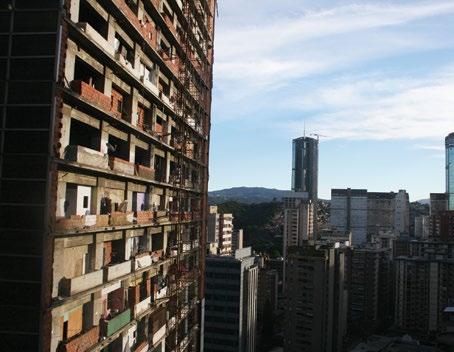
While these types of “urban slum” applications are not ideal, Du Toit suggests that when properly managed, urban or suburban palimpsest can be undertaken in a way that ensures existing infrastructure and property prices are positively affected, rather than compromised.
For example, it’s increasingly common in South Africa for homeowners in suburban environments to build a “granny flat” in the backyard to accommodate aging parents or grown-up children. Du Toit suggests the alternative route of exploring vertical urban interventions, which, if applied correctly and on well-suited properties, could help make cities greener.
“Homeowners working with architects can ensure that these interventions could take place based on good urban design principles,” he says. “The redevelopment, or layering, of existing single residential properties could be used to help provide more houses, offering opportunities for more people to live closer to commercial, social and educational nodes. They also offer additional income for homeowners by way of rental.”
Indeed, the City of Cape Town has created a precedent for this by changing its town-planning regulations in recent years to allow for up to three dwellings per residential erf, which simplifies redevelopment procedures by negating a zoning change application.
There is also room for developers to get involved in bigger projects, particularly within urban nodes, by partnering with city councils and town-planners to relook existing properties with an eye for development.
“This type of partnership means there’s proper consideration given to green infrastructure, such as rainwater harvesting and solar installations, which ensures existing infrastructure is not put under strain,” he says.
The building lacks elevators, installed electricity, running water, balcony railing, windows, and even walls in many places.[3] The complex has six buildings. Reportedly, residents with scooters or motorcycles are able to ride inside the tower up and down to the 10th floor, whereafter the stairs are required. This is an example of “people doing it for themselves”.
The Caracas housing shortage led to occupation of the complex by squatters led by ex-convicts in October 2007, with over 200 families, representing about 40% of Caracas's "informal communities", taking over the centre. Eventually the number of inhabitants in the Tower had grown to 2 500 residents by 2011.
In 2014, the government had its way and the occupants were evicted. To this day, the building remains unused, although structurally damaged by an earthquake in 2018.
References
1. https://www.worldbank.org/en/topic/urbandevelopment/overview
2. https://data.worldbank.org/indicator/SP.URB.TOTL.IN.ZS?locations=ZA
3. Romero, Simon; María Eugenia Díaz (1 March 2011). "CARACAS JOURNAL; In Venezuela Housing Crisis..." published in the NY Times.



ALL THE PIECES YOU NEED FOR RELIABLE AND DURABLE CIVIL ENGINEERING SEALING


READY TODAY, DESIGNED FOR THE CHALLENGES OF TOMORROW


The development of Conradie Park, a landmark integrated precinct project close to Cape Town’s iconic Old Mutual Park Pinelands, is pacing ahead. The target of just over half of the 3 500 residential units is in sight within the next three years, say the architects. The property offers 22 hectares of developed land and parkland.

According to Peter Stokes, Partner and Principal Architect from dhk Architects, which together with Jakupa Architects and Urban Designers are the design and execution firms in collaboration on the enormous project, construction work began in the year 2020. Works continued continued through the various stages of the Covid-19 pandemic, despite all the challenges it presented to the built industry.
“Currently, 25% of the residential component of the development is complete and occupied, and this comprises phase one social housing of over 400 apartments and 300 first-time buyer apartments, in line with the Finance Linked Individual Subsidy Programme (FLISP) housing, currently in progress,” he says.
Gareth Griffiths and Concor Gareth GriffithsThe intent of the planners was to meet the stated ‘Better Living’ programme goals of the Western Cape Government by providing an affordable, integrated housing opportunity on a brownfields site previously occupied by a former provincial hospital. The hospital ceased full operations in 2002 and today only a relatively small part of the original hospital complex remains; the Western Cape Government’s Orthotic and Prosthetic centre on the boundary with the suburb of Thornton.

Overall, Conradie Park is a joint undertaking between the Western Cape Government and Concor, with infrastructure funding supported also by the national government’s Urban Settlements Development Grant (USDG) - in a sense the ideal public/private sector partnership.
“With the first phase of social housing completed, along with the associated public spaces, a vibrant living space has been provided for our early occupiers with a substantial proportion of social housing qualifying elderly and retired persons living side by side with the younger first-time occupants”, adds Stokes.
“We are currently busy with the construction of the first two buildings of open-market apartments, which entail approximately 230 apartments. Phase two social housing, numbering close to 650
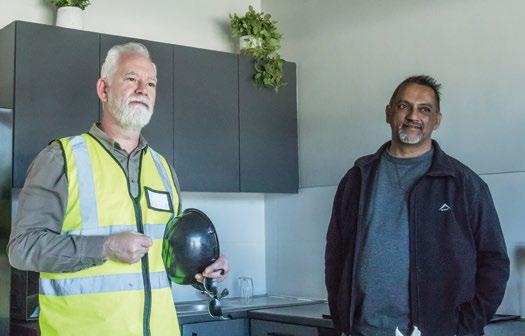
“On the shared public spaces side, the historic hall and heritage building has been renovated and is used for community events, including fitness classes for residents. Our first phase includes a creche and various small-scale local shops. The retail centre will be going on-site in the next few months, with Checkers as the anchor tenant,” adds Pather.
Guy Briggs, Partner and Head of Urban Design at dhk, says that the layout of the site is on a grid rotated at 45 degrees to the north-south line with the residential development arranged in the shape of perimeter blocks around courtyards.
“This provided optimum orientation with the majority of planned apartments facing northwest or northeast to optimise energy usage for cooling or heating during summer and winter. We have therefore addressed energy efficiency, down to individual dwellings,” he explains.
“The office components for Conradie Park will be delivered later in the development cycle, when demand has recovered. Together, these will substantially deliver on the design vision of creating an integrated, mixed use development.”
apartments, will be going on-site in the next few months,” says Gabs Pather, Principal Architect at Jakupa Architects and Urban Designers.
Experienced Section 21 housing association, Own Haven (www.ownhaven.co.za) is the social housing partner on this extensive project.
During a recent site tour by To Build, water management on site was a notably well-executed design feature, requiring a sophisticated regime of sustainable urban drainage systems (SUDS) to take into account the 100-year flood line.
There is a carefully conceived integration of these essential features into public green areas and other space. The retention of a former water pressure tank that serves as a reminder of the heritage near the eastern boundary of the site, supplies brown water for irrigation of the complexes’ green areas.
The buildings themselves are elevated above the 100-year floodline with ground floor levels well clear of that mark and then to cope with anything beyond that mark, walling and ground floor window design is executed to handle any contingency.
The sustainable water-management regime includes rainwater harvesting and borehole water for irrigation, topped up by municipal treated effluent.
Use has been made of landscape elements or public areas, that include courtyards to filter and slow down runoff, provide stormwater polishing through the wetlands integrated into the landscape. This facilitates an amenity within the park that fosters biodiversity, supported by carefully placed retention ponds in the park.
“The emphasis is on creating a pedestrian focused environment that departs from a conventional car-led model, essential in transitioning to more sustainable urban development,” adds Briggs.
Arriving on the site, the first time visitor is struck by a return to face brick typology so popular in the 80s. In fairness to the designers, the effect of the red brick with a partially overbaked appearance is substantially offset by the clever use of prepainted corrugated steel exterior cladding, especially on the upper levels of the social housing units.

The facebrick is also anything but uniform. Great care was clearly taken by the designers to incorporate features within the brickwork, for example using cant bricks or specially formulated ‘L’ shaped bricks or hollow breeze blocks to lend texture to the surface, as well as off-setting alternate courses to create a ribbed rustication effects at the base of the buildings. This presents a striking effect when viewed from close up.
Other apartment blocks feature conventional plaster walls that have been painted. The contrast between this and the face brick adds aesthetic appeal and variety to the elevation.


On display are three show apartment units that exemplify the accommodation on offer. At the lower end of the range, the social housing units are well appointed, fitting an impressive range of features into an attractive living space. FLISP units are likewise carefully designed, with balconies, to ensure the best lifestyle for upwardly mobile startup property owners. Open market double bedroom apartments are available in larger units as well as studio apartments, all offering enhanced fittings and fixtures.
Quality and durable materials selected lend credibility to the clear objective of
Another interesting urban environment accessory is the introduction of cast concrete outdoor elements such as planters and waste bins, branded with the Conradie Park logo. These impart identity and reinforce the sense of being in a unique, integrated city.
It is these landscaping and green features that add a ‘wow’ factor in the outdoors, offering a viable urban ‘city’ to work from or retire, in companionship with neighbours and also supported by organised community events, some of them in the fully refurbished community hall.
 A sophisticated SUDS regime was implemented to handle flood drainage.
A sophisticated SUDS regime was implemented to handle flood drainage.
the developers to provide a quality lifestyle to all.
Mark Schonrock, Property Development
Executive at Concor agrees, and says the achievements to date already have fuelled
the creation of a sustainable community within the development, a critical part of the Conradie Park vision.
The development started in January 2020, and completed its first phase with
the occupation of the Greenmarket complex comprising 432 units by January 2022. The following buildings, named after key Western Cape landmarks like Paarl Rock and Boulders, began occupation in September and December 2022, respectively.

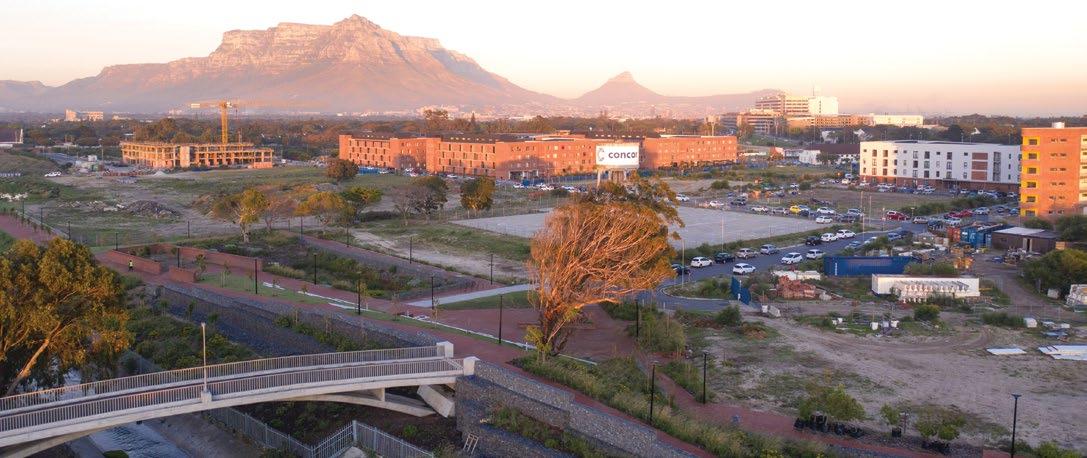
“The largest node of the Conradie Park development, will be a mixed-use centre featuring 10 000m2 of retail space, a 2 300m2 gym complex, and 550 unit residential blocks. This is also shortly on the horizon,” Schonrock concludes.
As with all major developments, the existing communities abutting Conradie Park will emerge as potential winners on many levels, in particular with the upgrades to or construction of the following infrastructure:
Architects: dhk Architects and Jakupa Architects & Urban Designers in association
Urban Designers: As above
Project manager: Igual
Quantity surveyor: MLC
Civil Engineer: Nadeson
Structural engineer: Nadeson / Zutari
Mechanical engineer: Solution Station
Landscape Architects: dhk and GreenInc as landscape architects
Principal contractors: Concor Western Cape
Electrical engineers: Solution Station
Fire consultants: Solution Station
• A new footbridge that has been completed over the Elsieskraal canal links to Odin Drive and provides cycle and pedestrian access for residents of Thornton to the parks, schools and shops at Conradie Park.
• Completed road upgrades to Forest Drive improve capacity and traffic flow to Jan Smuts Drive.
• A completed footbridge over the railway alongside Forest Drive, and a new cycle path along Forest Drive, provides improved cycle and pedestrian access to Mutual Station.
• A new vehicular bridge over the central line railway will shortly link Voortrekker Road to Forest Drive at Rooikrans Street, improving connectivity between Kensington and Thornton.



















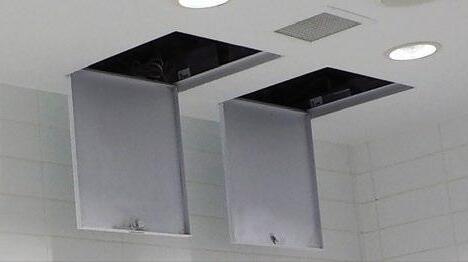




Summit XPS insulation boards, cornices, trapdoors and our Knauf insulation range set a new standard in quality and affordability. A proud member of the Swartland family, all Summit products are made from high-quality materials to ensure you get long-lasting performance, peace of mind and value for money.

For more information visit www.summitxps.co.za or call us on 0861 22 3444.

To Build is excited to present building material project technology update by Sharné Bloem, a regenerative architect and founder of Team Mahali, who also serves as the sustainability consultant at Afrimat Hemp. Sharné’s focus is on green architecture, energy efficiency and experimentation.
Hempcrete, an increasingly popular biocomposite material made from hemp fibres and formulated lime, is revolutionising the building industry with its outstanding properties and sustainable benefits.
Hempcrete making significant contributions towards achieving carbon neutrality
Renowned for its exceptional insulation properties, lightweight nature, and eco-friendly characteristics, hempcrete is making significant contributions towards achieving carbon neutrality and promoting sustainable building practices worldwide.
Builders in various regions of Southern Africa have been quick to embrace hempcrete as their preferred choice for both residential and commercial projects, recognizing its potential to transform construction practices and reduce environmental impact.
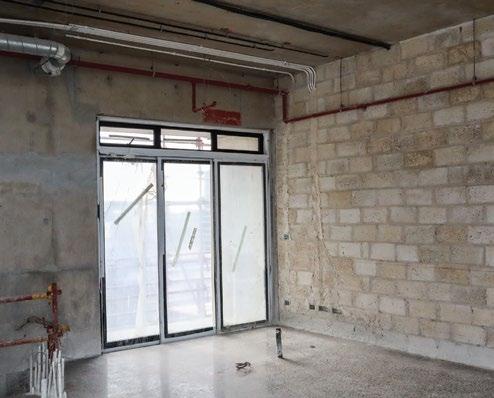
About a sustainable building movement in South Africa

In South Africa, hempcrete has found versatile applications in construction, being available in two main forms: hempcrete blocks and in-situ cast hempcrete. In-situ cast hempcrete walls are moulded directly on the construction site, conforming comfortably around the substructure before curing. Sun-dried and air-dried hempcrete blocks are precured before delivery, offering added convenience for on-site construction.
Hempcrete blocks have emerged as a game-changer in the building industry, defying stereotypes and proving their worth in external wall construction. Combining hempcrete blocks with other materials such as timber stud walls or timber beams as the substructure allows for innovative and captivating exteriors, with options for stunning timber cladding or a lime plaster render on the exterior walls.
Hempcrete blocks can also be seamlessly integrated into hybrid wall systems, coexisting with brick and mortar on the outer skin while providing exceptional strength and insulation on the inner skin, reinforced by a ring beam for structural integrity. These groundbreaking applications demonstrate the remarkable flexibility and robustness of hempcrete, offering a harmonious blend of cuttingedge construction techniques with sustainable materials, and unlocking a new era of sustainable and aesthetically pleasing architecture.
Beyond its versatile applications, hempcrete stands out for its remarkable environmental benefits. The exceptional insulation properties of hempcrete contribute significantly to improved thermal regulation within buildings, resulting in reduced energy consumption and lower carbon emissions.
This inherent energy efficiency not only enhances the comfort of occupants but also significantly lowers the environmental footprint of buildings. Hempcrete is also a carbon-negative material, meaning that it actively sequesters carbon dioxide from the atmosphere during its growth cycle, helping to mitigate the impacts of climate change. By choosing hempcrete as a building material, builders in South Africa and beyond can actively participate in building a greener and more sustainable future.
The progress of hemp cultivation in South Africa has been fueled by favourable legislation, with the legalisation of industrial hemp cultivation since October 2021, requiring farmers and growers to obtain the necessary permits.
This pivotal move has sparked enthusiasm among numerous farmers and growers, who have eagerly embraced the opportunity to cultivate industrial hemp. Many have already established off-take agreements, ensuring a steady supply of the raw product needed for hempcrete production. This growing demand for hemp as a construction material not only propels the hemp industry but also bolsters the growth of sustainable building practices in the region.

As an award-winning regenerative architectural design collective based in Cape Town, Team Mahali proudly stands at the forefront of the hempcrete movement in South Africa. Passionate about promoting sustainable and eco-conscious design, we have wholeheartedly embraced hempcrete and are actively engaged in two groundbreaking hempcrete block projects. These projects exemplify our commitment to creating environmentally responsible and innovative architectural solutions that positively impact both communities and the planet.
Hempcrete is transforming the construction landscape in South Africa and elsewhere, offering a multitude of benefits for builders, residents, and the environment. Its outstanding insulation properties, lightweight nature, and eco-friendly characteristics make it a highly attractive choice for sustainable building practices.
As the hemp industry continues to thrive, South Africa is witnessing a paradigm shift in construction practices, embracing hempcrete's versatility and positive environmental impact. By leveraging hempcrete's exceptional qualities and combining them with innovative building techniques, builders and designers in South Africa are poised to usher in a new era of sustainable and aesthetically pleasing architecture that aligns with a greener and more eco-conscious future.
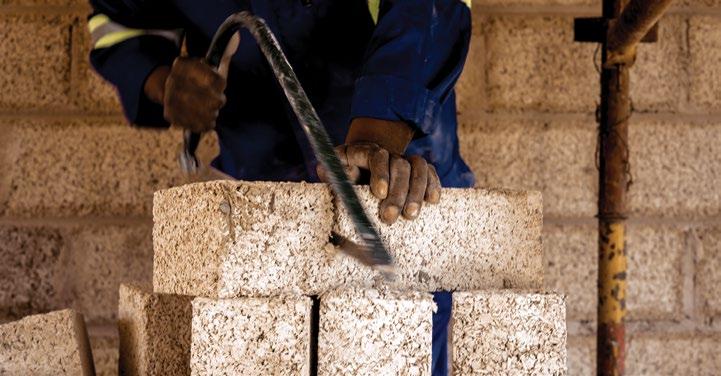
A global multidisciplinary professional firm that is actively involved in several major strategic highway projects across Gauteng, argues that these projects are not just about road construction, but also about community building, social welfare and economic growth.
Through these infrastructural developments, says Sameshan Naidoo, Principal Associate, Transport & Infrastructure for WSP in Africa, the company is contributing to the creation of new communities, providing access to road networks, and fostering economic opportunities.
"Everything we do locally adheres to our international best practice standards, particularly regarding sustainability and decarbonisation. This is central to our work," he says.
The strategy involves working closely with the province and developers to make
the projects a reality. An underlying agile approach ensures smooth operations, despite fluctuating local government structures. Consistent oversight throughout the project lifecycle, ensures that all infrastructure is built according to current best practice design, complemented with construction quality control and quality assurance.
By engaging with the Gauteng Provincial Road projects and the various developers working on these projects, the firm has demonstrated its commitment to the development of Township Informal and Housing Developments (TIH). These create strategic links between previously
inaccessible areas while also generating jobs to the benefit of socially sensitive and previously disadvantaged communities including Diepsloot, Sharpeville, and Alexandra.
To enhance transparency and efficiency, WSP uses cloud-based BIM-enabled software, enabling all stakeholders to monitor the project progress in real-time.
“Our approach allows developers, contractors, and clients to stay informed about all on-site activities without physically being there, enabled by a fully digital construction management environment,” Naidoo explains.
The Gauteng Major Strategic Highways Projects currently underway include:
• K46 William Nicol project in partnership with a major Gauteng based developer, is presently in construction.
• K56 & Erling Road project, a greenfield project run in conjunction with two major developers that is planned to commence construction in Q3 2023.
• K174 – Riverwalk Interchange in Vanderbijlpark, where WSP is working closely with the Gauteng Province, which is expected to conclude by March 2024.

• K73 – Allandale upgrade aims to unlock numerous development opportunities and is expected to be completed by October 2023.

• First phase of the K155 Linksfield project is anticipated to start construction later this year.
• D483 Rehabilitation project, which includes the upgrade of the road to Cullinan, is due for completion in July 2023.
“We are also focused on attracting, developing and retaining talented engineering, project delivery and construction management staff (www. wsp.com/en-ZA/careers). We provide relevant construction experience for young engineers to obtain their professional registrations and also the opportunity to work on major road projects such as these,” Naidoo adds.


Fibertex SA
78 volume 13 | issue 3 www.tobuild.co.za
According to Fripp, his company is also seeing greater demand for geosynthetic products from local and foreign mining operations. The competitive cost of manufacturing makes South Africa an attractive source of raw materials. The local operation has the support of a global team of technical experts, meaning that they are independently certified to deliver the high standards in product quality and service excellence.
“For example, Fibertex F-range geotextiles are tested and certified to provide 100-year durability,” he says.
Each product line plays an important role for its intended application in the building sector; filtration, separation, protection, and cushioning. These products are complemented by geosynthetic products that provide a complete solution to projects in diverse applications, including road construction and maintenance, mine rehabilitation, railway construction, warehousing, wastewater treatment plants and landfills.
“That said, our most popular products remain those used by builders and contractors for drainage and separation”, he adds.


Geotextiles enhance lifetime, strength, and overall quality. These are key materials used in the construction of high-performance and costeffective engineered solutions; and as durable products these materials can enhance the lifetime, strength, and overall quality of construction projects.
“Key advantages of Fibertex materials over others available in the local market are exceptional performance, eco-friendly features, and extended service life. Our geosynthetics range is engineered to deliver superior results, providing optimal solutions for every geotechnical challenge,” says Fripp.
“While South African businesses face multiple challenges, including water, electricity, infrastructure, and security issues, we focus on securing those essential services, such as borehole water and backup power supply, to sustain business operations.
“We actively collaborate with the local business community to engage with the Government on matters related to security, infrastructure development and skills enhancement”.
For example, the Fibertex SA team forms part of the Hammarsdale Cato Ridge Development Association (HCRDA), an entity comprising 60 members dedicated to co-operative initiatives for area development. Indeed, the company’s manufacturing plant in Hammarsdale, KwaZulu-Natal, is the largest manufacturer of UV stabilised virgin PP (polypropylene) nonwoven geotextiles produced in Africa, with certification for durability of over 100 years, in accordance with the latest EN standards.
Concern for the environment is a critical concern and no chemical binders are used in the product or production process. In addition to the wide range of products made from virgin polypropylene (PP), Fibertex also has a range of products based on recycled polyester (rPET). No waste is discarded from the facility, and all products are 100% recyclable.
High-performance products, compliant with stringent quality, environmental and health specifications, play an important role in specialist sectors, including acoustics, automotive, bedding, building, composites, concrete, filtration, flooring, furniture, geotextiles, medical and wipes.
The company’s geosynthetics range encompasses nonwoven and woven geotextiles, gabions and mattresses, drainage pipes and fittings and erosion control and cellular confinement solutions. They also supply soil reinforcing products, including geogrids and geocells, as well as geosynthetic clay liners as part of composite lining systems in modern landfills.
Fibertex recently supplied a geosynthetic solution designed to combat soil erosion at a housing estate on KwaZulu-Natal’s North Coast.
This project involved the use of 3 000 m² Fibertex Soil Saver 292, which has been used to stabilise the slope and 3 000 m² Greencell 75 mm for added protection to the structure.
Fibertex SlopeSaver 292, a biodegradable geojute, designed for use as a surface stabiliser for pre-vegetated slopes, is manufactured from woven natural jute fibres, to form a mesh of approximately 10mm x 10mm in aperture, that is staked at 1m² intervals. After installation, the jute eventually degrades into an organic mulch, by which time the planted vegetation has developed its own rooting system.
According to company specialists, the Fibertex Greencell system creates an environmentally friendly solution to protect structures that are susceptible to excessive soil erosion.
Advantages of the lightweight Greencell system are its tear resistance and long service life. Greencells are manufactured from alternatively stitched UV-stabilised, coated geotextile strips, to form a continuous honeycomb-type square cellular mat. The geocell is then filled with earth, gravel or concrete.
Fibertex Greencells and Soilsaver are highly efficient erosion solutions, which are used to stabilise structures like embankments, slopes, river profiles, sand dunes, base courses and drainage canals.
Fibretex Universal DIY materials manufactured locally, provide sustainable solutions to multiple drainage, filtration, separation and containment issues in gardens, driveways, patios and ponds.

Fibertex Universal performs excellently as a separation geotextile between sand and stone to prevent intermixing of layers; as a separation material for root control and as a stabilisation fabric for under-paving to prevent sagging and rutting. Universal also acts as a filtration layer to allow water to pass through the fabric and retain soil fines.
In addition, the product can also be used behind retaining walls to prevent loss of the retained soil through the facing. This versatile material also acts as a separation and filtration layer in subsoil drainage systems and is designed to minimise maintenance, reduce weeds and avoid the need to use chemicals.
Fibertex home and garden products are easy to install and can be cut to the required dimensions simply by using scissors. Fibertex Universal rolls are available from leading DIY and hardware stores throughout the country, in both 1m x 10m and 1.3m x 10m sizes.
The local Fibertex team (www.fibertex.com/products/home-and-garden) supports the diverse product range with a technical advisory service throughout the African continent.
lightweight, durable and cost-effective solution for the construction of environmentally friendly reinforced retaining walls.
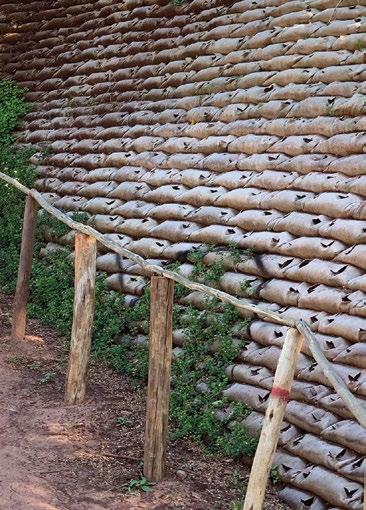
#designforlife
• Are used in the construction of protection structures in landscaping and building installations, to guard against flooding and for erosion control.
• Are manufactured from a strong and porous fabric, which is mechanically needlepunched together.

• By filling these bags with free-draining medium grain sand, a durable retaining structure can be built, which allows the free passage of water through the structure.

• Can be used as a medium for planting shrubs, which will eventually cover the entire structure, to create an attractive green wall.

When specifying a centrifugal pump for a dewatering project on a building site, a key concept to understand is the head specification of that pump. An industry expert shares some basic information with readers.
Some advice when choosing the most suitable dewatering pump is not to confuse the concepts of head and pressure, according to Steve du Toit, rental development manager at pump and dredging dewatering specialist, IPR (www.pumprental.co.za).

With over 16 years in the pump dewatering business, IPR has both the range of pumps to choose from and the expertise to guide customers, says Du Toit. IPR was recently appointed by leading pump brand Atlas Copco as a master distributor for the Southern African region for its extensive range of dewatering pumps.
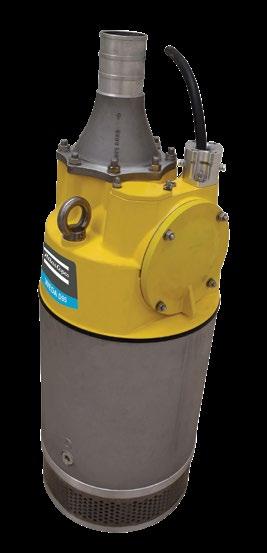
“In layman’s terms, the pump head is the height to which a pump can raise fluid –measured in metres or feet,” he explains. “The head is important when specifying centrifugal pumps because their pumping characteristics tend to be independent of the fluid’s specific gravity, which can also be referred to as relative density.”

However, warns Du Toit, the pump head should not be confused with pressure, while there is a close relationship between the two parameters, one fundamental difference is that the head is independent of the fluid characteristics.
Regardless of the fluid’s relative density, the pump will lift it to the same height, it does not matter, therefore, whether the fluid is water or a heavy sludge.
Pressure is indeed dependent on the fluid being pumped, and is affected by gravity. As a result, the same head will generate a different pressure – depending on the fluid’s relative density.
“Suction conditions are also relevant to the pump head,” continues Du Toit. “So if the suction level is lower, the head measured will be less.”
What the motor of the pump essentially does is convert electrical energy into mechanical energy; this energy is then imparted into the fluid as pressure. When the suction level is raised or reduced, the potential pressure of the liquid is adjusted accordingly. The more pressure a pump can deliver, the higher the head will be.
“Of course, pump manufacturers cannot know your suction level parameters, so they calculate the pump’s total head, this is done by subtracting the total suction head – measured as height above sea level – from the total discharge head.”
There are substantial losses in the pumping circuit due to friction, depending on the length and diameter of the pipe itself, as well as the bends and gate valves through which the fluid flows.

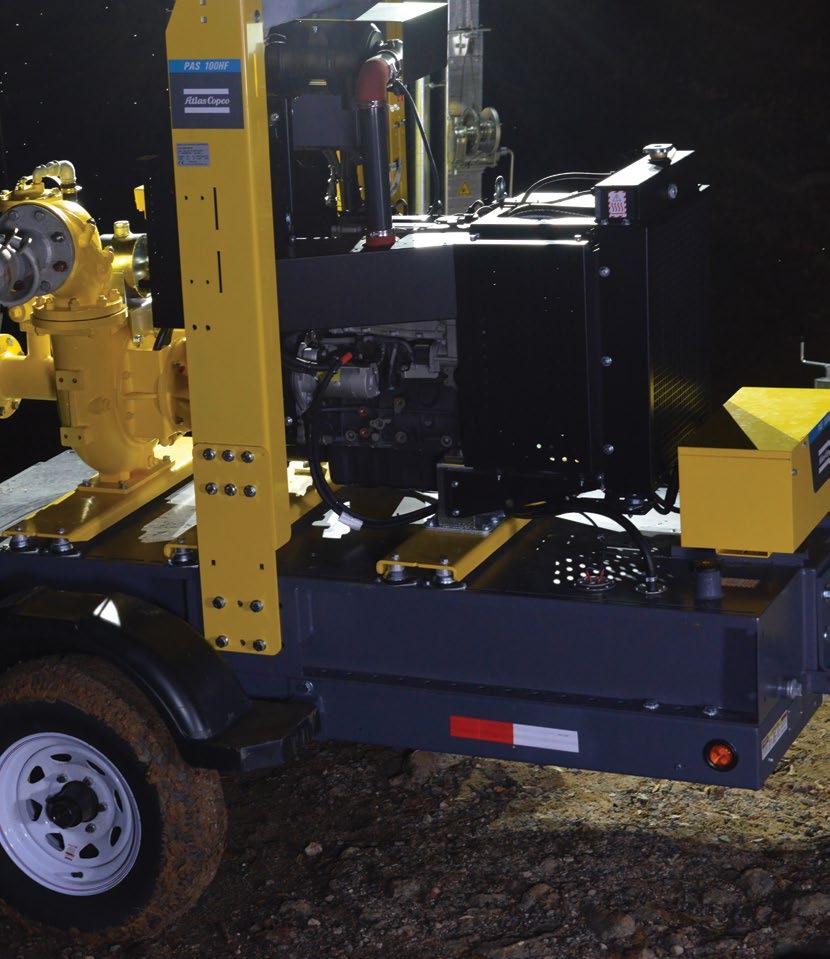
“The sum of the head and friction loss will result in the total (actual) head, which is a more reliable indicator of pump performance than pressure,” says du Toit. “The total head indicates what the pump can do regardless of the suction conditions; when combined with your flow requirement, the total head will allow you to choose the right pump.”
Finally, the performance of a pump at a certain speed – or revolutions per minute (RPM) – can be found in the manufacturer’s datasheet. There, it will be displayed as the flow rate (Q) versus head curve. The flow will have zero or little flow at its maximum head, which is also sometimes called the shut-off head. Pump users need to ensure that the pump they choose has enough flow at the head they require.
“Remember that this selection procedure only applies to centrifugal pumps. Piston pumps can provide more pressure, and they are selected based on flow only.”
In conclusion, Du Toit notes the difference in flow units used between North America, where US gallons per minute are used, and those countries with the metric system. The latter use litres per minute, cubic metres per hour and litres per second.

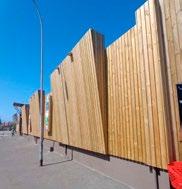
The science of wood preservation is the treatment of wood to increase durability and give extended service life. This involves the placement, within the wood microstructure, of preservative chemicals which are antagonistic to wood destroying agencies
The major factors which bear on the effectiveness of biological preservation systems are:
• the biological hazard to which the wood will be subjected in service.
• the efficacy of the preservative chemical to the particular wood destroying organisms which will be encountered. Also, the permanence of the preservative chemical under given conditions of hazard following treatment of the wood.
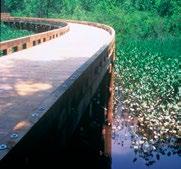
• the penetration and retention of preservative chemical, for example the extent of the penetration of the preservative chemical into the cross section of the timber and the amount retained in the penetrated zone per cubic metre of the wood.
A similar set of factors determines the effectiveness of preservative treatments against weathering and fire. These factors include:
the natural durability of the heartwood,
the presence or absence of sapwood,
variability within and between pieces and species,
the preservative distribution gradient
H6 High Hazard: Prolonged immersion in sea water (jetty cross bracing and pilings, landing steps, retaining walls etc).

H5 High Hazard: Fresh water/heavy wet soils (poles used in jetties & walkways, foundation piling, agricultural poles under irrigation and fertiliser e.g. vineyards, etc).
H4 High Hazard: Normal ground contact, subject to periodic wetting and leaching (poles for fencing and light structures, landscaping, stakes, etc).

H3 Moderate Hazard: Exterior above ground, subject to periodic wetting and leaching (cladding, decking, balustrades, stairs, fencing rails and slats, etc).
The hazard to which wood material will be subjected has an enormous bearing on the extent to which wood preservation will be effective. A piece of wood kept continually dry inside a building is subject to a much lower hazard than a piece embedded in the ground. The hazard level determine the required intensity of the key wood preservation factors, namely the toxicity of the preservative chemical, its fixing characteristics, the penetration required and the retention required. .
H2 Low Hazard: Interior above ground, protected from wetting and leaching (interior joinery, roof trusses, framing, flooring, etc).
All wood preservatives in South Africa that contain active ingredients (biocides) are classified as agricultural remedies and are therefore required to be registered by the Department of Agriculture. Once registered a National Standard must be prepared by the South African National Standards Authority. Only then may the preservative be used for industrial and commercial purposes.
Wood preservatives may be divided into three main groups, namely water borne, oil borne and light organic solvent.

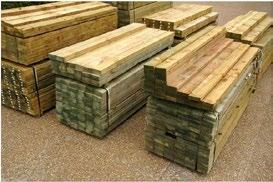

Water borne (CCA, Borate, Copper Azole and ACQ)
The water borne preservatives are traditionally inorganic chemicals which are dissolved in water, the water acting as a carrier in the treatment process. These preservatives leave the treated wood odourless, clean to the touch, sometimes imparting a colouration. There are two main types of water borne preservatives commonly used in South Africa namely Non fixed, such as the borate compound which is subject to water leaching and fixed, such as the copper chrome arsenic (CCA) preservative, which is highly leach resistant.
Oil borne (Creosote or mixtures of creosote and coal tar solutions)
In South Africa the only oil borne preservative which has been used, is creosote and mixtures of creosote and coal tar solutions, with or without a waxy oil additive. Oil borne preservatives are applied in hot and cold open bath or in vacuum pressure impregnation plants, always at elevated temperatures to lessen viscosity and increase uptake.
Creosote is a heavy duty preservative which is toxic to most fungi and insects. It does not alter the dimension of the wood during treatment and is highly water repellent. Creosote treated wood is resistant to water leaching and can be used for ground contact hazard. Its water repellency gives it excellent weathering characteristics. Creosote treated wood has a
The term Light Organic Solvent Preservative (LOSP) actually describes the carrier of the preservative and the LOSPs vary greatly according to the preservative chemicals with which they are formulated. LOSPs are solutions of organic fungicides (such as tributyltin oxide) and insecticides (synthetic pyrethroids). They are suitable for interior, above ground hazards such as in housing and other buildings. Effective preservative treatment of wood can only be achieved by impregnation in a vacuum pressure plant.
characteristic odour. It is usually black and may through 'bleeding' exhibit black deposits on the wood surface. Creosote is an excellent preservative for applications such as transmission and telephone poles, railway sleepers, foundation and marine piles, bridge timbers, etc.

For more information on any aspect related to treated timber products and the correct use of treated timber, or where to contact SAWPA Members, please contact:

Tel: (011) 974 1061 or 078 144 6213
E mail: admin@sawpa.co.za Website: www.sawpa.co.za
The global market for structural timber is expected to continue to grow, with a projected compound annual growth rate of 6.5% between 2021 and 2028. Some analysts suggest figures as high as 13% per annum growth globally(1).

 Gareth Griffiths
Gareth Griffiths
The construction industry has seen a steady growth in the usage of structural timber worldwide, and Africa is no exception. Structural timber, also known as engineered wood, is a versatile and sustainable building material that offers a range of benefits, including strength, durability, and cost-effectiveness.
In recent years, the use of structural timber has become increasingly popular in the construction of buildings, homes, other structures and even skyscrapers.
One of the main drivers of this growth is the increasing demand for sustainable building materials. Structural timber is a renewable resource that can be sustainably harvested and grown, making it a more environmentally friendly alternative to traditional building materials such as concrete and steel.

Depending on processing methods and the nature of the final product, structural timber enters its lifecycle as a construction material with a minus zero embodied carbon content, representing many tonnes of CO2 sequestered by the trees during their lifecycle prior to being harvested.
The principle of embodied carbon comes from assessing the amount of energy consumed and carbon dioxide released into the atmosphere by the mining and production of many common building materials from cradle (source, including mining activity) to gate (completed product leaving the factory) plus the fossil fuel burned to produce that material and its transportation.
The table below lists the embodied carbon content for various common building materials. Engineered timber carries a very low embodied carbon (and energy) content because of its natural source and relatively low energy used during its manufacture.
As can be seen, not only does the CLT (engineered) timber have a lower embodied carbon content, due to its processing and transport considerations, it also is a net reducer of carbon from the atmosphere (carbon sequestered - trees convert CO2 to O2).
Another factor contributing to the rise in usage of structural timber is advances in manufacturing technology, which have made it possible to produce engineered wood products that are stronger, more durable, and more consistent than ever before. This has expanded the range of applications for structural timber, making it suitable for a wider range of building projects.
(2)
Meanwhile, In Southern Africa, the usage of structural timber has also been on the rise. While many African countries have traditionally used concrete and masonry for building construction, there has been a growing interest in sustainable building materials in recent years. Structural timber has been found to be an effective alternative, especially in regions where timber is readily available.

The benefits of structural timber are particularly important in our region, where there is a need for affordable and sustainable housing solutions. By using sustainable building materials like structural timber, African countries can reduce their carbon footprint and promote environmentally responsible building practices.
According to the Integrated Carbon and Energy Guide published by Bath University (BSRIA)(3): “Provided at the timber is sourced from a sustainable forest that replants trees at the same rate at which they are removed, and the timber which is then used in construction does not decompose or is burnt; then arguably carbon sequestration is taking place in the short-term cycle and can be accounted for”
Timber has been used in a variety of building applications, including wall cladding, and interior and exterior walling in office buildings. In wall cladding applications, timber provides a natural and warm appearance that is ideal for creating a welcoming and inviting environment. Timber wall cladding is available in a variety of species, colours, and finishes, making it a versatile option that can be tailored to suit any design aesthetic. It provides the best low VOC options, especially when unpainted. Its thermal performance is excellent and is highly regarded as an enabler of wellness in the workspace.
In interior and exterior walling applications, timber can be used in a range of ways to create a variety of design effects. Timber can be used to create feature walls, partitions, and decorative panels, and can be left natural or finished with a range of coatings to protect the timber from wear and tear. Timber walling can also be combined with other materials, such as glass or metal, to create striking visual contrasts.
Several high-profile projects have demonstrated the potential of timber as a sustainable building material.

• The T3 building in Minneapolis, USA, is a LEED Gold Certified seven-storey office building constructed entirely from timber, which was selected for its sustainability and design flexibility. The building features exposed mass timber (beams and columns) creating a warm and inviting interior space that enhances productivity and wellbeing.
• The International House in Sydney, Australia, is a 10-storey office building constructed from cross-laminated timber (CLT), a type of engineered timber product that offers exceptional strength and durability. The building showcases the potential of timber in high-rise construction, and is an example of how sustainable building materials can be used to create innovative and environmentally friendly building designs. The building is rated a 6-Star Green Star by the Green Building Council of Australia.
• The Arbour, is a relatively new 10-storey building for George Brown College in Toronto. Its novel structural system consists of the slab-band arrangement of concrete construction but with most of the concrete replaced with mass timber. Composite CLT-concrete slab bands with an overall thickness of 15.5 inches span 30 feet between large 1.4-foot- by-3.9-foot timber columns, and infill 6-inch- thick CLT panels clear span 15.5 feet between the slab bands.
• Opened in mid-March 2019, the Mjøstårnet/ Mjøsa Tower in Brumunddal near Oslo, Norway, reaching 85.4 metres, is currently the world’s tallest timber building. The 18-storey tower is made from lightweight prefabricated materials, consisting of glulam, CLT and laminated veneer timber.
• Set to complete in 2026, Swiss residential building Rocket&Tigerli, is being constructed near Zurich. Rising to 100m, it will surpass the current tallest timber residential tower, the Mjøstårnet building, by 14.6 metres, as reported by Dezeen.
Timber is a popular choice for wall cladding, as it provides a natural and warm appearance that can add a touch of warmth and character to any building. It is also commonly used for interior walling in office buildings, as it is lightweight, easy to work with, and has good acoustic properties.
References:
• In Cape Town, The Ridge, a 6 Star Green Star As Built certified building was constructed for occupation by Deloitte in the Portswood District of the V&A Waterfront. It incorporates timber cladding and screens to create a unique, highly functional and sustainable building façade.
The global CLT market is projected to grow from $806.0 million in 2021 to $2,066.1 million in 2028 at a CAGR of 14.4% in forecast period.
As sustainable building practices become increasingly important, the use of timber in construction is likely to continue to grow.
(1) Mass Timber Construction Market By Construction Type (1-8 Storey, Above 8 Storey), By Material (Cross-laminated Timber (CLT), Nail-laminated Timber (NLT), Glue-laminated Timber (GLT), Other), By Application (Residential Construction, Commercial Construction, Industrial Construction): Global Opportunity Analysis and Industry Forecast, 2022-2031
(2) Integrated Carbon and Energy Guide - Bath University / BSRIA - https://www.bsria.com/doc/rjREwr
(3) https://www.fortunebusinessinsights.com/cross-laminated-timber-clt-market-102884


























So-called business forums, many of them violent, are holding the construction industry to ransom, says the Master Builders Association North. They emerged in Umlazi prior to 2015, when groups began invading construction sites, demanding a share of the project or that the company employ specific people or companies. By 2018 this had spread to other provinces.
These business forums, popularly known as “construction mafia”, often tout heavy calibre weapons. A similar model of extortion has spread to other industries, especially mining.

Much of the violence has subsided in KZN, says Jenni Irish-Qhobosheane, a researcher at the Global Initiative Against Transnational Organised Crime, who delivered a keynote
speech at a recent Human Sciences Research Council event.
But, she goes on to say, this isn’t a sign that extortion has ended but signals that it has become normalised, as a “cost of doing business”. With the threat of violence always present, actual violence becomes less necessary.
Speaking at the same event, Ayabonga Cawe, Chief Commissioner at the International Trade Administration, made the point that extortion compromises the government’s vital infrastructure rollout and affects the whole economy. He cautioned that such conflicts arise when there are different interpretations of what regulations actually mean.
“The problem lies in how preferential procurement has unfolded, opening up the way for opportunistic criminals,” he adds.
Irish-Qhobosheane agrees: “We should recognise that economic exclusion and a lack of economic transformation creates a fertile ground for extortion in construction. However, it is important to distinguish between genuine community concerns and criminals involved in extortion for their own gain.”
Business forums typically demand 30% of the contract value be allocated to business forum members or direct to the forum itself. This figure appears to derive from National Treasury’s Preferential Procurement Policy Framework Act,39. It states that 30% of public procurement contracts should be contracted to designated groups, as provided for in the Preferential Procurement Regulations. Sometimes an even bigger percentage is demanded. The aim is clearly to give the demands a respectable veneer of transformation.
The National Treasury has strongly condemned this practice as both illegal and a blow to government’s attempts to advance the interests of historically disadvantaged individuals and SMMEs.
Construction companies, and other businesses should put in place comprehensive directives for dealing with extortion attempts, argues Musa Shangase, Director at Corobrik.

“The first principle should be to afford the business forum the opportunity for dialogue, to
present their demands. I advise sharing with them the terms of the contract and what the obligations for advancing transformation goals are,” he says.
“They need to be informed whether the project is a public or private one, and what the implications are in each case.
“Companies should request a database of the business forum’s constituents, and employ a community liaison officer who can act as a mediator between the community and the company. The duties of the community liaison officer include negotiating with others, developing and fostering relationships and getting people to understand others' points of view.”
In public sector projects, the community liaison officer acts as the link between the main contractor and the business forum. In the case of private sector projects, if business forums insist on participation, Shangase says to report the matter to the SA Police Services.
Business Against Crime South Africa (BACSA) released a guideline for the public to help companies bring this problem under control.
Roelof Viljoen, National Project Manager at BACSA, says that it’s important for companies and their employees to understand what extortion actually is, so that they can identify it when it occurs, and report it. Mounting successful prosecutions is key to reducing extortion.
Extortion as a crime requires two elements to be present: the demand for a benefit, such as money, work or a contract that would not normally accrue to the demander or his or her beneficiaries, as well as a threat of damage should the demand not be met. If no threat was uttered, then extortion as defined in law has not occurred.
Business forums and their unreasonable demands place strain on the construction industry and ... in effect closing down the smaller, empowered companies that work alongside them.
Advice on site
BACSA advises proper preparation to resist extortion threats. A key outcome is that uninvited visitors should not be allowed onto the site.
Every effort should be made to communicate to the community the low chance of receiving any benefit. Business forums often use legal terminology to give their demands credibility, so posting information at the entrance to the site showing there is no basis for extortion makes good sense.
For example, an official notice on a government project should state that preferential procurement regulations have been followed. A private project should state
that fact, noting that these regulations are not applicable. Documentary proof in the former case should be held on site as well.
Where applicable, adding that local contractors have a share in the work also helps and if none were found, state that also. Local communities expect to benefit from work carried out in their area. Despite there being no legally enforceable requirement, it makes sense for them to attempt to create opportunities for locals and to engage continuously with them. This undercuts the business forums’ typical claim to represent the local community.
Business forums don’t understand the rules of business. Explain to them that on-site
personnel are not empowered to make decisions regarding the allocation of work. Point out that it is illegal to sub-contract without following a fair bidding and tender process, and that deviating from this principle could lead to the tender being cancelled, meaning that work is lost for everybody.
Ensure there is a safe area for employees on site, as well as an alternative exit. Recording equipment such as CCTV is important, as are primary and secondary communication options. Everything related to any attempt at extortion must be meticulously logged, and if a disruption occurs, a set of outlined safety procedures must be followed. The incident should be registered with BACSA for inclusion into the National Priority Committee discussions and reported to the police.
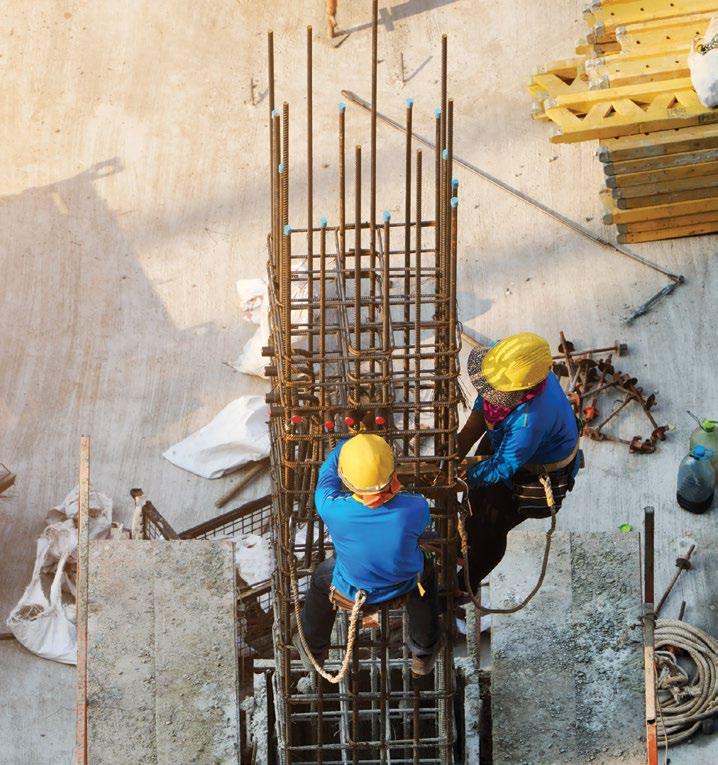
Irish-Qhobosheane argues that strong partnerships are the key to addressing the challenge and normalisation of extortion. The government needs to develop a comprehensive strategy to address systemic extortion and must include a more proactive response from the criminal justice system.
The practice has become so prevalent that victims don’t mention it, are fearful of speaking out due to threats and are accommodating extortion practices by working it into the budget.
Victims must feel safe enough to talk about and report extortion.
Business forums and their unreasonable demands are placing yet more strain on an industry that is already fragile. In doing so, they are not only affecting big companies, but in the process are closing down the smaller, empowered companies that work alongside them.
Mohau Mphomela, Executive Director at MBA North says that extortion must not become routine: “Our industry has been battling severe headwinds for many years, and this extortion continues to put vital contracts at risk. We commend Business Against Crime for its initiatives”
See also the opinion article by TO BUILD’s legal expert, Adv BC Hack on page 96.
BACSA advises proper preparation to resist extortion threats.


Clay masonry is a natural insulator against summer heat, winter cold, humidity and noise. With timeless appeal, impressive strength and maximum fi re resistance, clay brick looks beautiful for a lifetime.
CBASA represents clay brick & paver manufacturers across Southern Africa. We drive inclusive, sustainable practices in the industry while supporting our local producers, builders and architects.

Catalysed by initiatives such as the United Nations Climate Change Conference and Nationally Determined Contribution emissions goals, decarbonisation imperatives have become an urgent priority.
While we are seeing accelerated investments into implementing sustainable production and trade strategies, what is also encouraging is the strengthening of circular economies, the world over.

South Africa is making uneven progress in realising its ambitious 2030 goals. Despite the growing emphasis on achieving a circular economy, one that is effectively geared towards sustainable reuse, recycling, and repurposing, our landfills continue to pile up. In fact, we continue to discard the waste to the point that South Africa is running out of space to put its garbage (Wadula, 2022).
That’s not just an inconvenience; landfill emissions harm the environment and have serious health consequences for nearby communities (Tomita and Slotow, 2020). But what if we could instead harness landfill waste and put it to productive use? What if we could turn discarded materials, like old tyres, into fuel for critical industrial inputs?
Cement producers paving the way
Globally, cement producers are increasingly using waste as a fuel source, reducing its environmental impact and leveraging the associated economic benefits. Particularly in Europe, the use of waste-derived alternative fuels – such as discarded tyres – for cement production is far more commonplace.
The supportive legislative framework has proved highly effective: by some estimates, waste is being used to substitute up to 80% of the fuel requirements at some cement plants (Zieri and Ismail, 2019).
Arguably, the use of alternative fuels is even more urgent in South Africa. Fortunately, alternative fuel strategies have already been adopted by several local cement manufacturers with realised investment towards tyre feeding systems.

However, a more focused strategy is required for untapped alternate fuels, in the form of refusederived fuels, industrial wastes and biomass, to
name a few. But for South African producers to adopt aggressive strategies towards coal replacement with alternate fuels, an enabling legislative and fiscal environment is required. A legislative policy on zero landfill and higher cost to dispose should be proposed together with appropriate support mechanisms for manufactures who can sustainably process such wastes.
Additionally, if we are serious about repositioning the South African economy for sustainable and competitive growth, we need to meaningfully support such initiatives that help significantly decarbonise local industries. Carbon border tariffs in the EU and other major export markets mean that the South African industry needs to move away from coal if it wants to remain internationally competitive.
For the cement industry, alternative energy sources offer a way to reduce our dependence on fossil fuels for critical economic input. More so, with the country’s electricity crisis becoming more acute by the day, and the drive for renewable energy rapidly increasing, we are poised to see a large wave of infrastructure development. However, to achieve these ambitious goals, we will need a reliable and more environmentally sound source of quality cement.
The cement industry has always been a major contributor to the local economy. By supporting cleaner, greener cement production that serves the country’s development needs, it also helps drive sustainable economic growth across a complex value chain; one that creates critically needed jobs supports SMMEs and ensures the security of cement supply when we need it most.
More broadly, investing in waste-derived alternative fuel sources greatly expands the cement value chain, creating employment and business opportunities in waste processing and related roles.



Developing waste-to-fuel production capacity across the cement industry thus makes compelling sense environmentally, socially, and economically. However, it won’t spontaneously happen without support. While there are strong market incentives for investing in greener cement production, there are currently several factors that inhibit investment in waste-to-fuel technology.
More notably, there are insufficient incentives for sustainable waste management. Government has made good progress in managing tyre waste; even so, what is needed now is a series of collective, accelerated actions to realise the immense potential of this endeavour. To ensure waste is used responsibly, we need enhanced regulations that prevent dumping and encourage the repurposing of waste (tyres, municipal solid waste, industrial waste, etc.) as an energy source.
These are all opportunities we can’t afford to go up in smoke.
0800 236 368 | www.ppc.africa
References
Tomita, A. and Slotow, R. (2020) ‘South African study highlights the growing number of landfill sites, and health risks’, The Conversation, 9 July. Available at: https://theconversation.com/south-african-study-highlightsgrowing-number-of-landfill-sites-and-health-risks-141890 (Accessed: 26 April 2023).
Vasiliu, L., Gencel, O., Damian, I. and Harja, M. (2023) ‘Capitalization of tires waste as derived fuel for sustainable cement production’, Sustainable Energy Technologies and Assessments, 56, article number 103104. Available at: https://doi.org/10.1016/j.seta.2023.103104
Wadulla, P. (2022) ‘No more space for SA’s waste’, Financial Mail, 7 July. Available at: https://www.businesslive. co.za/fm/fm-fox/2022-07-07-no-more-space-for-sas-waste/ (Accessed: 26 April 2023).
Zieri, W. and Ismail, I. (2019) Alternative Fuels from Waste Products in Cement Industry’, in L. Martínez, O. Kharissova and B. Kharisov (eds) Handbook of Ecomaterials. Cham, Switzerland: Springer, pp. 1183-1206.
While scrolling through social media my eye fell on an article quoting the chairperson of a major retailer in South Africa about problems besetting commercial enterprises. He included the effect of crime and criminal syndicates on businesses. One such criminal activity is extortion.
Bryan HackThe building industry is susceptible to acts of extortion because of the physical nature of building work. Access to building sites can be impeded with relative ease for both workers, suppliers, and management. It follows that the result is a delay, which in turn has financial repercussions.

Both in my legal practice and while acting on the bench I have been presented with many allegations made by contractors that they are subject to intimidation; often from a person purporting to represent local communities and wanting to demand some compensatory financial gain for allowing the building work to proceed unimpeded. This is widespread and includes rural, peri-urban and inner-city building sites.
In my experience, a cursory investigation often shows that the person is not a spokesperson for the community but does
have influence to provoke individual members of the community to act to impede the work, such as intimidating workers or blocking access to building sites.
The media also regularly reports on extortion by gangs and criminal syndicates who use fear and intimidation to procure money by threat of harm.
These reports range from a recent article that a municipal councillor tried to extort R6 million rand from a contractor building a parliamentary village, to reports of night club bouncers being set on club owners. This is often done with the threat of harm and even death, if there is non-compliance.
A handbook1 was recently published about extortion by The Global Initiative, an independent civil-society organization,
headquartered in Geneva, and is dedicated to seeking new and innovative strategies and responses to organized crime.
On its website2 which launched the book, it states: “Extortion is a pervasive global problem that threatens developing and developed countries alike. Defined as the process of extracting monetary or other forms of payments by means of violence or the threat of violence, extortion now permeates all levels and facets of commerce and reaches into all echelons of society around the world. From large corporations, to small-scale and informal businesses – few are spared its clutches.”
It goes on to reference various parts of the world and expressly includes: “urban powerhouses in Africa and Asia – such as Cape Town” as being an area that has to deal with serious extortion problems.
The challenge to the South African building industry is to find ways to address the problem. It is common knowledge that the law enforcement agencies here are underresourced and over stretched.
In SA, it is particularly relevant that extortion impacts upon the community where the work is being carried out because more often than not the actors seeking to extract money or work claim to be representative of “the community” but are not. The consequences, however, are that contractors will stop working in those communities which become a no-go area to the detriment of the law-abiding citizens.
In my view the answer lies in recognising that it is the community that can be an ally in routing out extortion. It is the determination of whether a person who approaches a site seeking recognition as a community representative truly represents the community which needs to be addressed.
This is also internationally recognised. In the USA, the Forbes Chicago Business Council publishes various articles for the help and advancement of business: “Community involvement is an excellent way for any business to build relationships and increase brand awareness and visibility. Whether by participating in or sponsoring community programs, companies that encourage community involvement can stand out from their peers.”
They recommend seven ways in which community engagement can grow a business:
1. Stay focused on the human component.
2. Empower employees to get involved with local organizations.
3. Focus on creating good memories. A suggestion is to create a hashtag and separate social media accounts. This can easily be done for any building development.
4. Be as direct and transparent as possible and rather overcommunicate by sharing information about decisions and relevant progress in the works.
5. Align engagement with business values. It is not necessary to be too inventive to find ways to alleviate community problems in South Africa. Many building sites, for example, in the normal course of work, rely on alternative energy resources. Knowledge acquired on site can be shared with communities, along with limited, if any, energy supplies.
6. Be passionate and active by taking time to listen and learn about the community and be active about making a difference.
7. Get involved in community initiatives by, for example, checking out the local municipality website, ratepayers associations and community centres. The city, town or township will probably post what the most important initiatives are.
In the architectural profession in the United Kingdom there is a growing recognition that there has been a genuine shift in the perceived value of providing residents with more ownership of the design process. This equally of course relates to the actual process of construction.
What is ideal is that community-led design should be integrated, happening from the outset, and be sustained throughout the life of a project which will create the best results.
If approached by anyone purporting to represent community interest do not assume they are there merely wanting to extort something. Afford them the courtesy of a hearing. You should find out quickly whether they are sincere and properly representative of a community or not. If not, present the reasons why you do not believe they are truly representative –above all else, do not resort to aggression or dismissal – engage, consult, consider and communicate.
If it is possible to involve the community in some form of financial benefit – like providing work, contributing to amenities (building a pathway in a park), a direct financial sponsorship such to a local school, providing radios for the community watch, etc, do so. If the budget is such that this is not possible explain why. It is not necessary to reveal trade secrets with an explanation that the profit margins are either nonexistent, as can and does occur, or are so small preventing any option of sharing.
The advantage of prior community involvement is that if a third party, unconnected to the community seeks to extort financial gain, your best ally should be the community. If they are engaged that will in all probability assist in a myriad of ways, identification, cooperation with police etc to stop you being harassed.
Bryan Hack is a practicing advocate at the High Court of the Western Cape and a member of the Cape Bar. He has served several terms as Acting Judge of the High Court and is experienced in property and other contractual matters. For questions, email him on hack@capebar.co.za

Reference

1. A Handbook for Community Response to Countering Extortion
2. https://globalinitiative.net
Mental health is ‘the’ construction H&S issue globally, and straddles occupational health and primary health, which are interrelated, writes Professor John Smallwood, Professor of Construction Management, Nelson Mandela University.
John SmallwoodThis article is intended to create awareness of the problem and challenges relative to mental health in construction, conscientise construction stakeholders, and engender the necessary interventions.
Historically, the focus in terms of health and safety (H&S) has been on the ‘safety’ component, to the detriment of the ‘health’ component, which is multifaceted. Although the Occupational Health and Safety Act (OHSA) and several regulations address occupational health (OH), there is the issue of primary health (PH). Furthermore, many OH and PH issues such as stress are interrelated. Stress, for example, which is experienced in construction, is an OH and a PH issue.
Construction is transient in nature, projectoriented, entails the formation of new teams
per project, and contract and/or short-term employment, takes place in the elements, entails long commuting and ‘working away from home’, and is physically demanding, which constitutes a cocktail in terms of contributing to mental health issues.
A study conducted by the Chartered Institute of Building (CIOB) among individuals involved in construction in the United Kingdom and other countries during October 2019, attracted 2 081 responses (Rees-Evans, 2020).

A total of 88% of respondents were male and 12% female. 5% worked as production workers, 50% worked at middle management level, and 34% at director or senior management level. The mean age of
respondents was between 45-55 years of age. 50% of respondents worked for a main contractor, 21% for a consulting business, 9% for a subcontractor, and 20% for ‘other’.
The percentage of respondents that had experienced various states is as follows: stress (97%); fatigue (96%); poor concentration (95%); overwhelmed (91%); anxiety (87%); a lack of self-confidence (86%); depression (70%), and suicidal thoughts (26%).
In terms of the working environment:
• 94% experienced stress due to time pressures;
• 93% experienced stress due to having too much work to do;
• 92% experienced stress due to unrealistic deadlines;
• 86% of senior-level staff experienced stress due to cost pressures;
• 84% found the lack of involvement in decisions caused them stress;
• 80% found noise levels stressful;
• 79% found inadequate temperature control stressful;
• 71% of manual workers found the lack of adequate toilet facilities stressful, and
• 67% found the uncertainty of working location stressful.
The business environment experience was as follows:
• 70% of workers experienced moderate to extreme levels of stress due to poor communication;
• 65% of senior-level staff found inadequate staffing to cause moderate to extreme levels of stress, and
• 64% of manual workers experienced stress due to bullying.
South African occupational health in construction studies
Smallwood and Ehrlich (1997) conducted the first ever ‘Occupational health (OH) in construction’ study in South Africa (and Africa) during 1996, which investigated, among others, the experience and causes of stress.

Two notable homogeneous ‘construction management’ sample strata were included in the study. According to the respondents, contracts management, site management, and all categories of production workers experienced stress, the degree of stress rising commensurately with the degree of occupation responsibility in the organisation.
In terms of the extent to which 27 causes within six categories contributed to the experience of stress, physical environment, organisational, individual, time variables, and off-the-job. Project schedule, job complexity, incompetent staff, overburdening, crisis management, inadequate staff, inappropriate communication channels, temperature, and lack of training, contributed to more of a major, as opposed to a minor extent.
These findings relate to those of a later CIOB UK study (Campbell, 2006), which identified the contributors to stress as follows: lack
of feedback (56.8%); poor communication (55.7%); inadequate staffing (55.0%); too much work (64.1%); ambitious deadlines (59.7%); pressure (59.9%); and conflicting demands (52.2%.)
A study conducted among construction H&S agents (CHSAs) in South Africa investigated, among others, the extent to which 30 occupational health (OH) aspects were identified on projects (Smallwood & Deacon, 2020). Table 1 below presents 6/30 aspects, which impact directly on mental health.
The ‘response’ column indicates the percentage of CHSAs who identified the
aspects of projects, and the ‘percentage of projects’ column indicates the percentage of their projects on which they were identified.
The physical nature of the construction process is reflected in ‘manual tasks’ and ‘labour intensive work’. ‘Monotony’ reflects the repetitive nature, and ‘shift work’ the disruptive nature of construction work. ‘Stress’ and ‘work pressure’ are interrelated in that the latter leads to the experience of the former. However, there are several other interrelationships such as manual tasks or labour intensive work and monotony, and shift work and stress.
These findings indicate that historically, the experience of stress and mental health issues have been, and still are a feature in the industry.
Mental health is ‘the’ construction H&S issue globally, and straddles OH and PH, which are interrelated.
The effects of mental ill-health are wide ranging, and ultimately impact on the image and sustainability of the industry, due to, among others, the immediate negative impact on individuals, the ‘longevity’ of the current workforce, and the need to attract young people and other potential participants to the industry.
A range of factors contribute to mental health issues, which have their origin in the structure of the industry, and design, procurement, and construction processes.
To address mental health effectively will require the South African construction industry to cure itself of ‘safetyitis’, acknowledgement that the approach to designing, procuring, constructing, and maintaining infrastructure, buildings, and structures requires a paradigm shift, and the construction process and its activities requires reengineering.

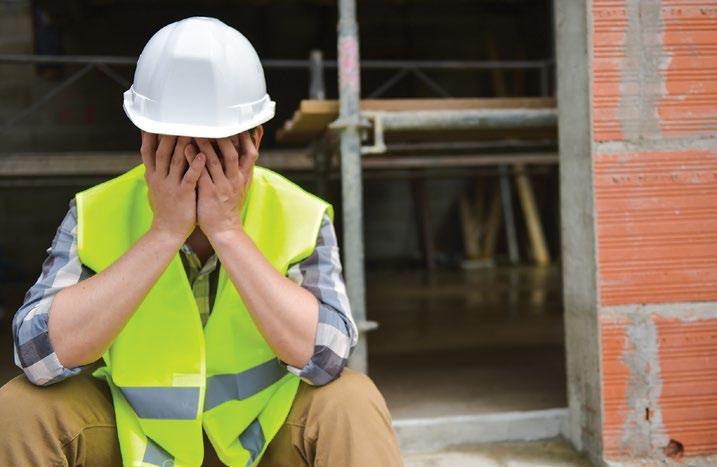
In general, the level of awareness and knowledge with respect to mental health should be raised through among others, articles such as this. Continuing professional development (CPD) should be promoted and championed by the built environment employer, employee, and professional associations, and statutory councils.
Industry H&S programmes, competitions, and star grading programmes should place the requisite emphasis on mental health, and on OH and PH in general. PH Promotion programmes should be comprehensive, and include mental health training, induction, and an employee assistance programme. Mental health guidelines and practice notes should be evolved for all built environment stakeholders. In this regard the Council for the Built Environment and the Construction Industry Development Board (cidb) should take the lead.
Multi-stakeholder project ‘mental health’ plans should be evolved, which plans
indicate the potential negative factors (hazards), and the potential responses / contributions by each stakeholder to mitigate them, in addition to generic mental health interventions.
The OHSA, Construction Regulations, and Ergonomics Regulations should include mental health requirements, and ‘Mental Health Regulations’ should be gazetted. Furthermore, the Construction Regulations require aspects that lead directly and indirectly to the experience of stress and mental ill health to be addressed. These
References
include, among others, inadequate project duration, long working hours, and physically demanding, hazardous, and monotonous work. However, this aspect must be highlighted relative to the requirement that clients conduct a baseline risk assessment prior to compiling the H&S Specification, which must be provided to both the designers and principal contractors.
Mental health should be addressed by all built environment higher education programmes, and construction skills training.
Campbell, F. 2006. Occupational Stress in the Construction Industry. Ascot: Chartered Institute of Building (CIOB).
Rees-Evans, D. 2020. Understanding Mental Health in the Built Environment. Bracknell: Chartered Institute of Building (CIOB).
Smallwood, J. and Deacon, C. 2020. Occupational Health (OH) Practices in South African Construction. MATEC Web of Conferences, 312, 03003 (2020), https://doi.org/10.1051/matecconf/202031203003
Smallwood, J.J. and Ehrlich, R.1997. Occupational health in construction. In: Proceedings of the 1st South African Construction Health and Safety Conference ‘Health and Safety in Construction: Current and Future Challenges’, Cape Town, 7 - 10 October 1997, 171-187.
Alliance has a wide selection of commercial inverter swimming pool heat pumps which is rapidly becoming the technology of choice for resorts, hotels, gyms, swim schools, spa aqua therapy pools and other large Olympic size pools. The Alliance full inverter heat pumps offer the ability to vary the heating capacity to suit different weather conditions resulting in reduced energy consumption and noise when compared to On/Off type pool heat pumps. Alliance’s inverter swimming pool heat pumps are the perfect solution for consistent reliability as well as an affordable environmentally friendly solution to heating pools all year round.
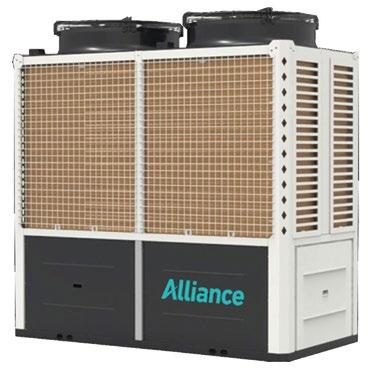
Contact Fourways Group for more details.


The use of heat pumps has become increasingly popular in recent years as a cost-effective and environmentally friendly way to heat water. The country is currently experiencing the most severe energy crisis in history as Eskom battles to meet the constant growing energy demand, and as such has asked citizens to reduce their power consumption by using electricity smartly to reduce the challenge on the national power grid. One such smart choice is residential heat pumps for your home. Household electricity consumption by water heating totals 35% of overall consumption, the biggest energy user in the household.

Reeflords worked closely with their building management team to design and implement a new heating system that would be more efficient, cost-effective, and sustainable.
The first step in the project was to conduct a thorough energy audit of the building. This involved analysing the energy usage of each unit and identifying areas where energy efficiency could be improved and ensure compliance with South African National Standards 10400-XA2 – Energy Usage in Buildings.
According to SANS 10400-XA2, not more than 50% of the annual volume of domestic hot water should be supplied by electrical resistance heating, meaning that hot water utilised must be heated by energy sources other than electricity to a minimum of 50%.
This means homeowners and property developers have a crucial responsibility in ensuring that their professional teams, including architects, are aware of the rules and adhere to them from the beginning of any project. They should also collaborate closely with expert teams and be open to suggestions for energy-saving design elements and materials that they may not have first considered. Greater efficiencies make the home less expensive to live in by lowering electricity costs,also saving time and money in the planning approval process.
Homes that use less energy are more comfortable to live in, as they provide greater protection from extreme temperatures. Unless a homeowner engages a specialist, the homeowner is normally held accountable for adhering to the SANS 10400 XA regulations.


Gated communities are popular among South African homeowners who are drawn to the security and lifestyle benefits. Property developers Reeflords believe that sectional title developments provide their clients with the most affordable and sustainable system of property ownership while generating return on investment; by building modern, contemporary, signature-design style residential buildings such as the Aura.
Reeflords developers began work on the project in 2020. Situated in Northgate, Johannesburg, the free-flowing, open landscaping boldly emulates Reeflords’ modern, contemporary, signature-design style, incorporating environmentally sensitive landscaping, lush indigenous trees, meandering pathways and a breathtaking pond for calm and tranquillity after a long day.
Fourways Group is the accredited distributor of Alliance Heat pumps in Southern Africa. The company is known for its high-quality air-conditioning and heat pump brands, aftersales support, and technical backup. Fourways presented a sustainable, energy efficient water heating solution for the Aura development. The project aimed to install heat pumps as an alternative source of heating water in line with SANS157 building requirements.
3.2kW Alliance Retrofit Heat Pumps were installed in each of the 356 apartment units, suitable for geyser volumes up to 150 litres. For ease of maintenance, the retrofitted units were positioned next to the geyser. Alliance water heater units operate using eco-friendly R410A gas, making them a highly sustainable choice for consumers. With an individual power consumption of 1.04kW, the total electrical heating capacity used in the overall project was 370kW compared to an electrical element (geyser) of 1068kW, for all the units. As a result, the cost of frequency used in relation to heating water has decreased by 64%.
Heat pumps work by extracting heat from the air or ground and using it to heat water or air, depending on the type of heat pump. They are much more efficient than traditional heating systems because they do not generate heat through combustion. Instead, they transfer heat from one place to another, which requires much less energy. Alliance heat pumps are relatively easy to install and are built to be weatherproof, they are also the only option for high rise buildings that cannot install solar for water heating requirements.
Overall, the project at The Aura has been a great success. The project was completed in 2022, and the Alliance heat pumps have demonstrated their expertise in providing energy-efficient and sustainable heating solutions for apartment buildings like the Aura.
The project at The Aura is a great example of how heat pumps can be used to improve the efficiency and sustainability of buildings, raise property market value, and provide a cost-effective solution for residents. Aside from cutting costs on utility bills, Alliance heat pumps also help reduce our carbon footprint. This technology has a critical role to play in helping South Africa achieve its carbon emission reduction targets. As more and more individuals become aware of the benefits of heat pumps, we can expect to see more projects like this become non-negotiable.
www.allianceafrica.co.za
An environmentally-aware programme at a new block of apartments located on the northern edge of the Sandton CBD, aims to reduce the environmental impact of the building by diverting waste away from landfills. The programme, which has been implemented by Smart Waste, was used at the multi-use building to achieve its sustainability goals and reduce its carbon footprint.
Acsiopolis
With the increasing concerns about the environment and the impact of waste on landfills, the development, @SandtonApartments, says it recognised the need for responsible waste management practices. The programme enables the building and its residents to divert waste from landfill, reduce greenhouse gas emissions, and promote sustainable living in the community.
From March 2022 to March 2023, the recycling report for @Sandton-Apartments
shows a total waste of 133 399kg was recycled, which resulted in an energy saving of 209 722kW, using 538 145 litres less of water. This translates into a reduction of 82 335kg in CO2 emissions, in turn saving 345 trees.
The waste management programme includes the installation of recycling bins and the implementation of a waste segregation system to separate organic waste from non-organic waste. Organic
waste is sent for composting and nonorganic waste is recycled or sent to a wasteto-energy plant.
In addition to reducing waste to landfill, the programme also provides residents with educational materials to raise awareness of waste reduction and recycling. The aim is to encourage residents to adopt more sustainable practices and to help them understand the importance of responsible waste management.


The vision is to lead the way in sustainable waste management, eliminating the need for landfills through innovative solutions and a commitment to zero waste. Landfills take up valuable space and can release harmful chemicals and greenhouse gasses into the air and water. By reducing the amount of waste sent to landfills, it becomes possible to preserve natural resources, protect the environment and mitigate the effects of climate change.
@Sandton-Apartments hopes that this programme will serve as an example to other high-rise buildings in the area and inspire them to adopt similar waste management practices. The building has already seen a positive response from its residents, who are pleased to be part of a community that values sustainability and the environment.
“We are committed to reducing our environmental impact and promoting sustainable living in our community,” says Simoné Muller, Residential Property Manager. “This waste management programme is an important step towards achieving our sustainability goals and we hope that it will inspire others to join us in our efforts to reduce waste to landfill.”
The Acsiopolis precinct In the heart of Sandton on Benmore Road is the home to @Sandton-Apartments. A unique development, it offers 480 leased, purpose-built apartments in a variety of configurations spread over two high-rise towers flanking the central @Sandton-Hotel tower.
The Acsiopolis Building is the first multi-used lifestyle precinct in South Africa that includes a 561-room luxury hotel, 480 upmarket leased apartments, conferencing and event facilities (including an 80-seater auditorium), a coworking space called CoWorx, an NCF curriculum nursery school, doctors’ rooms, physiotherapist, plastic surgeon, orthodontist, gym, clubhouse, deli, restaurant and spa.
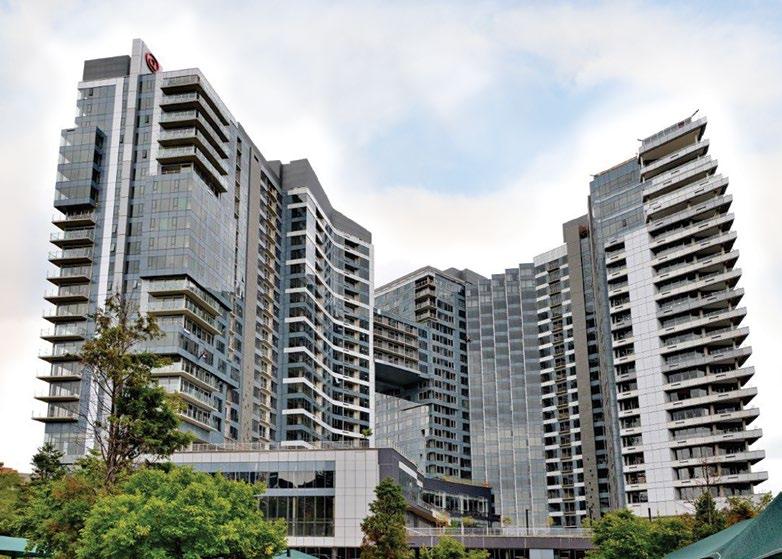
Water is vital. As much as our world ‘stops’ when the power goes out, the prospect of no water is much more dramatic.
In a well-publicised disaster, making the news on a global scale in 2027-2018, the City of Cape Town came close to Day Zero, the day when the taps would have run dry. It has happened in other towns and cities also, due to drought or broken potable water reticulation infrastructure. The prospects for a recurrence of the El Niño event are looming. This event signals dry weather for South African, nation wide.
The El Niño-Southern Oscillation (ENSO), is a current that is associated with a band of warm ocean water that develops in the central and east-central equatorial Pacific. El Niño affects the global climate and disrupts normal weather patterns, which as a result can lead to intense storms in some places and droughts in others. The atmosphere over the Atlantic Ocean can also be drier and more stable during El Niño events, which can also inhibit tropical cyclone genesis and intensification and therefore affecting Southern Africa's rainfall patterns. (Source: https://en.wikipedia.org/wiki/ El_Nino/)
Recent studies have found that climate change is increasing the frequency of extreme El Niño events. According to the CSIR, El Niño has historically been associated with record heat temperatures and droughts in summer rainfall regions of southern Africa.
We share useful information sent to us by Xylem, about how each household or office can effectively store water to help during water outages in the short term. Xylem is a leading global water technology company committed to solving the world’s critical water, wastewater, and water-related challenges through technology, innovation, and expertise.
"Water can last for a long time if stored responsibly," says Chetan Mistry, Strategy and Marketing Manager at Xylem Africa.
"How you store your water depends on its uses: potable water for drinking or cooking requires much stricter management than non-drinking water for washing or irrigation.

"But it's not difficult to adopt basic water-management techniques, and everyone should look at some type of water storage, especially rainwater capture and water recycling systems. In a water-scarce country like South Africa, we mustn't wait for the taps to run dry.”
Storing water for emergencies or to lower utility costs is practical, but to avoid making mistakes, let these useful suggestions be your guide.
Do you need water to drink or cook? Do you need to keep your vegetable garden hydrated? Will a lack of water harm certain operations in your business?
Water serves many functions, so determine your priorities and stockpile accordingly. An adult drinks around 3 litres of water a day, and you can double that to cover cooking needs per person. If you are a business, monitor water consumption for a month to see where the most demand exists.

There are different ways to access water. The simplest is to stockpile water from a municipal supply when it is plentiful, or buy bottled water.

Capturing rainwater is an affordable way to capture large amounts of water. Some are fortunate to have access to boreholes. You can also recycle water from your premises, such as water used for washing dishes or clothes, reusing it for irrigation, refilling cisterns, or outdoor washing. With the appropriate filters, you can make contaminated water drinkable, but avoid water contaminated with chemicals (such as water mixed with nonbiodegradable soap) or bio-matter (such as food or human waste).
In theory you could store water indefinitely. But this requires starting with clean water, keeping it away from light and chemicals, using sterilised containers, and avoiding future contamination.

It's more difficult to do in practice, especially if the water is for drinking. Consider rotating water stockpiles every six months, and look at decontamination options such as filters, UV light or controlled quantities of chlorine. Don't assume that water with no taste or odour is safe: certain diseases (cholera) and chemicals (heavy metals) can linger in water without giving hints of their presence.
4
5
There are different ways to keep water pure: using filters, UV lamps or chlorine. This will vary depending on the amount of water and how you plan to use it. You can also purify water by boiling it or adding small amounts of bleach.
But note that most techniques only kill biological contaminants. Removing chemical contaminants requires special filters. And again, remember that contaminated water can still appear clean and odourless, so err on the side of caution.
The tricky thing about water is that it supports chemical and biological activities. It expands when it heats up or freezes, so it can degrade metals and certain plastics.
Your containers should influence how long you can maintain your water stockpile. Outdoor containers should have adequate UV protection against sunlight that causes chemicals to leach into the water. You can use containers made from concrete or metal. However, the most common options use plastics such as acrylonitrile butadiene styrene (ABS), high-density polyethylene (HDPE), and polycarbonate, treated for sunlight exposure.
Jugs and bottles used indoors should be kept out of sunlight. Glass is the best medium to store small amounts of water. You can also use containers made from food-grade HDPE (marked #2 inside a three-arrow triangle). Avoid plastics marked 1, 3, 6 and 7 as they are often weak and can cause chemical leaching into the water. And always sterilise containers before use.
When storing large amounts of water in tanks, consider pipes and pumps for easy access. Do make this decision early, as it will impact other choices, including additional costs, where tanks will stand, the types of pumps and filters, and how you want to connect the tanks. For example, a tank system that irrigates your garden differs from one connected to your building's plumbing.

7 8 9
Many suburban homes have stockpiled water in the form of swimming pools. Though pools are not the best way to store water due to evaporation, you can cover them for more longevity, and it's simple to add chlorine to fight off contamination. Just note, too much chlorine and salts can make the water unusable in the home or garden.
Hence, pool water is often unfit for consumption as it is exposed. You should filter and treat it before drinking. And watch out for over-chlorination and chemicals.








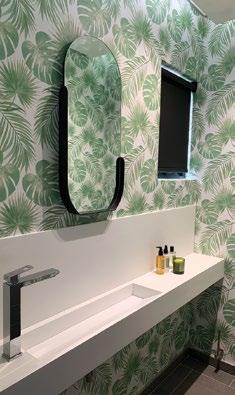


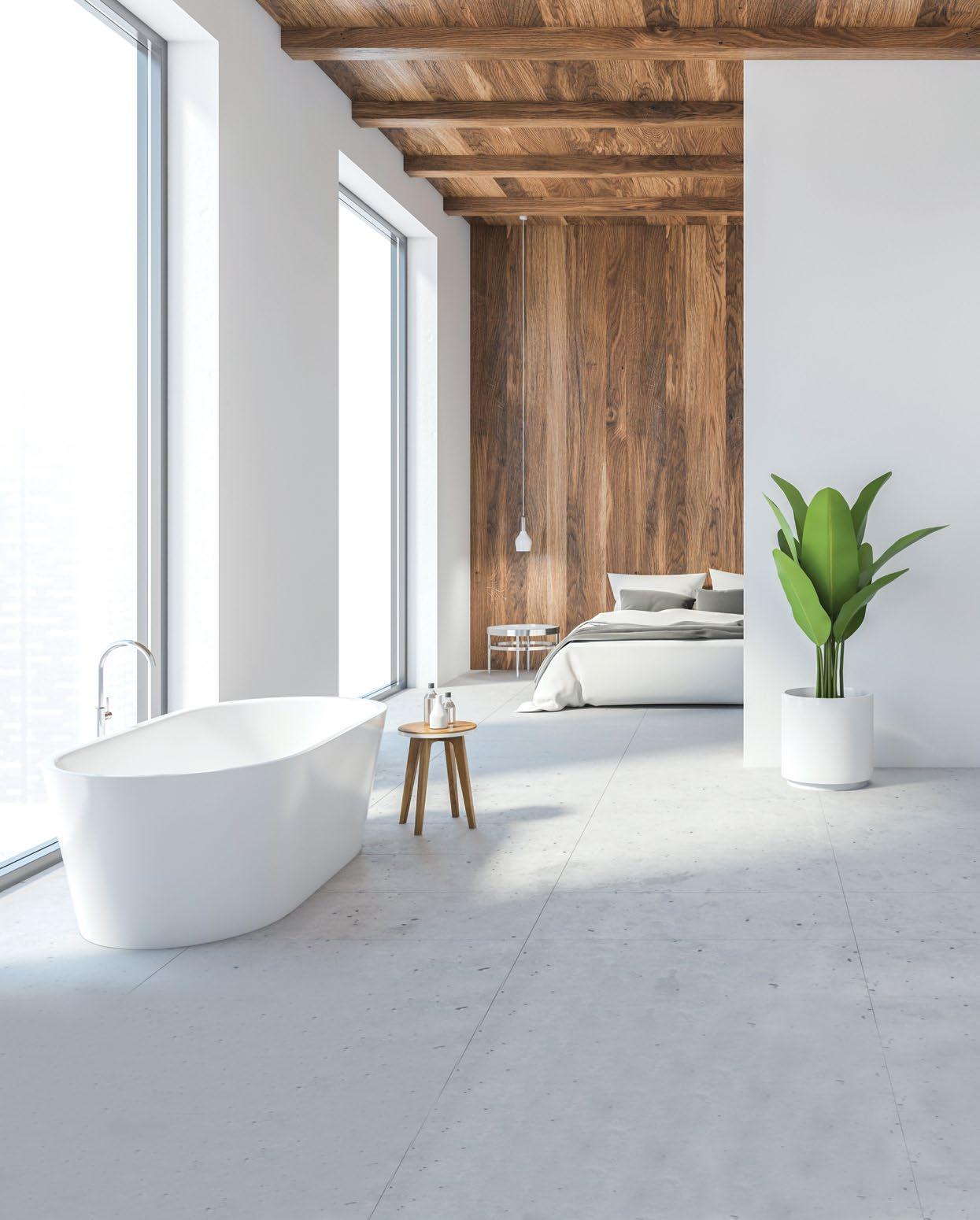






Thermo Fires is a privately owned, proudly South African family business. With over 20 years of experience in braai and fireplace manufacturing and design, our name has become synonymous with one of the largest ranges of quality and custom products. At Thermo Fires we strive to bring our customers the largest range of good-quality products at compe��ve prices, coupled with sound knowledge and a wealth of experience. Our mo�o Leadership through Quality embodies our vision to become the preferred supplier to the descerning architect, builder and customer.

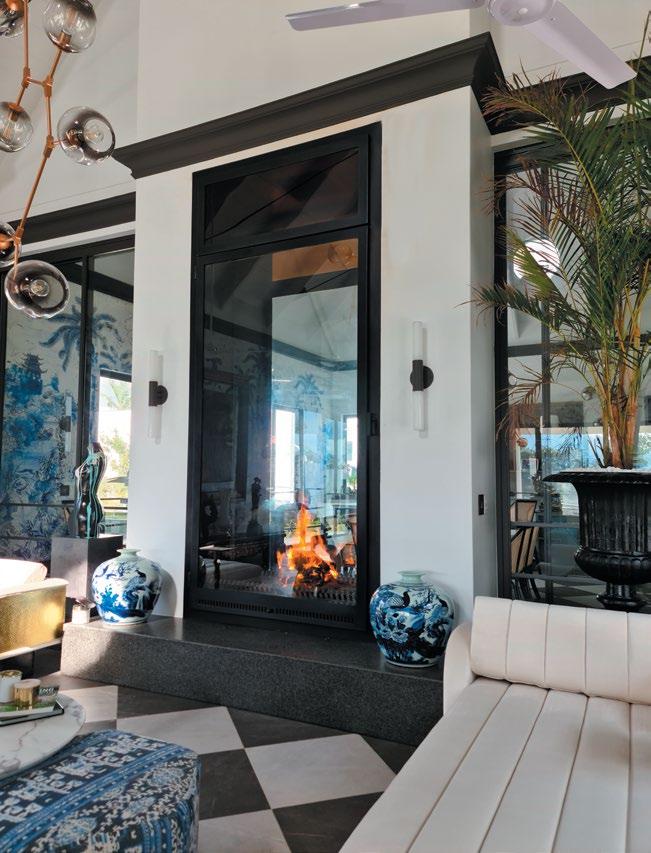


All braais in any range and style are available in mild steel, 3CR12, 304 stainless steel or a combina�on of materials, i.e., a mild steel braai with a brushed stainless steel façade.
As proof of our commitment to our product, Thermo is the only company to give a 20-year warranty against faulty workmanship.
Even with our vast range, we understand that some customers prefer and/or need a bespoke unit. We therefore have a team specialising in custom-designed units.
Above all, we promise to be honest in all our dealings and provide reliable service at all �mes. For advice you can trust, please call us or visit our showroom.


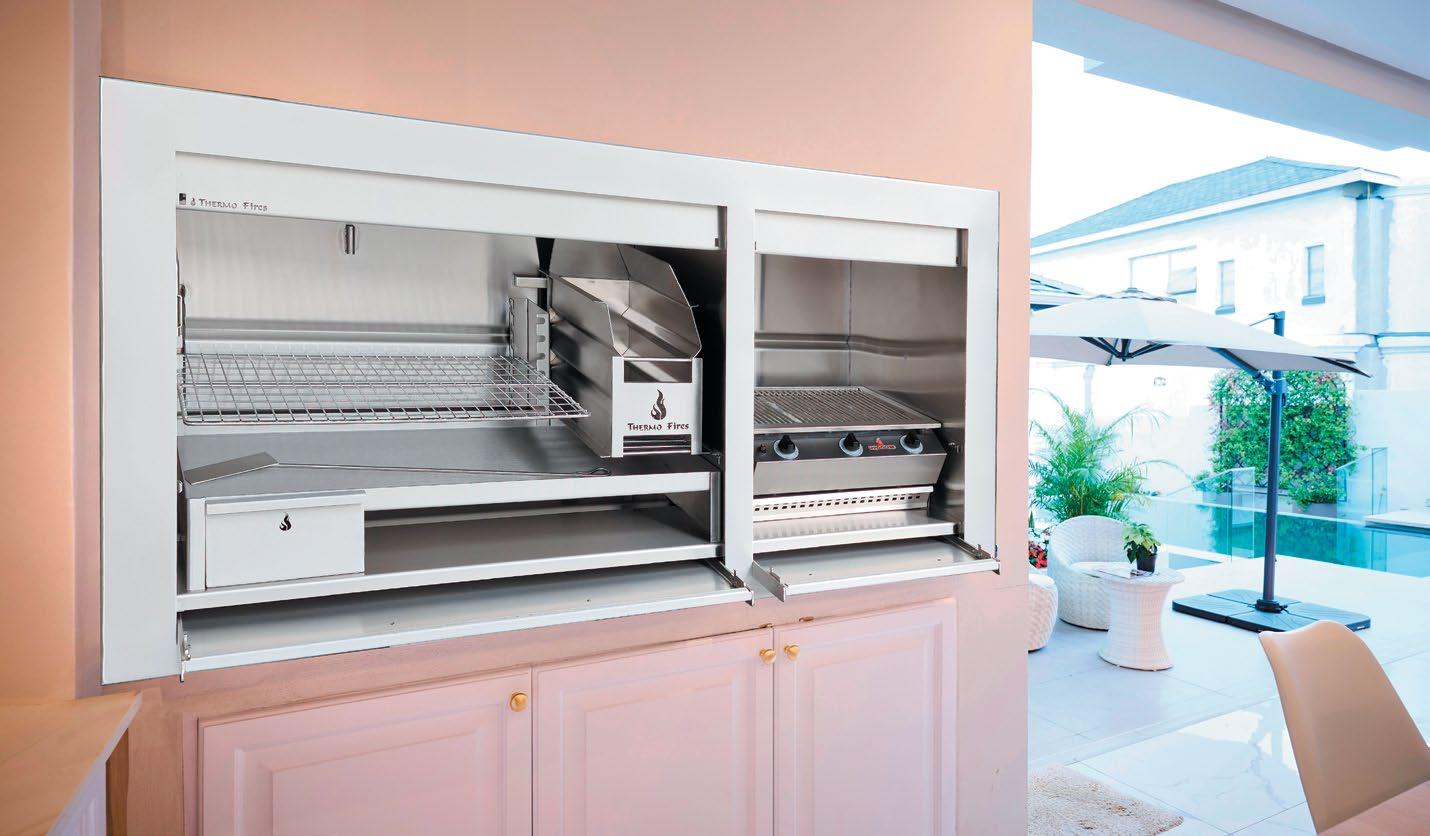
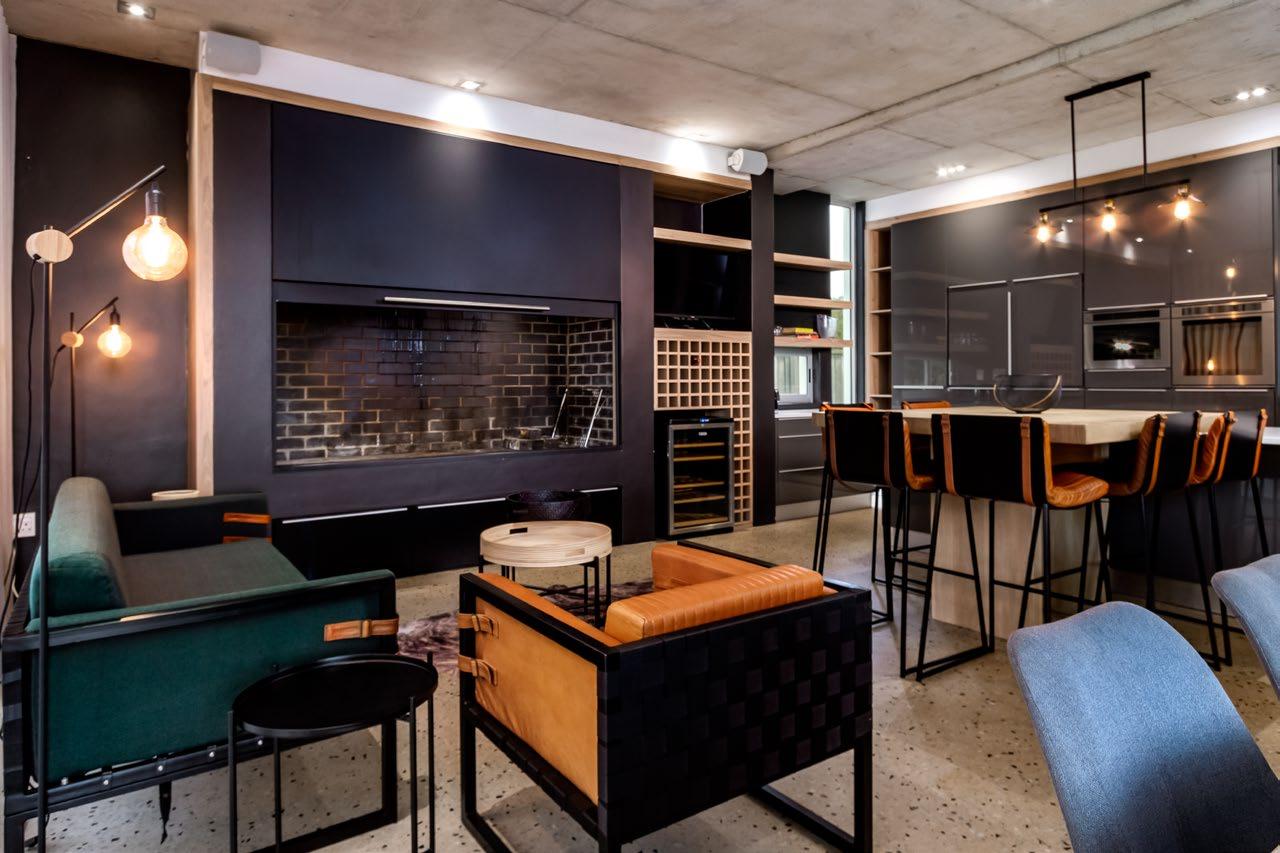

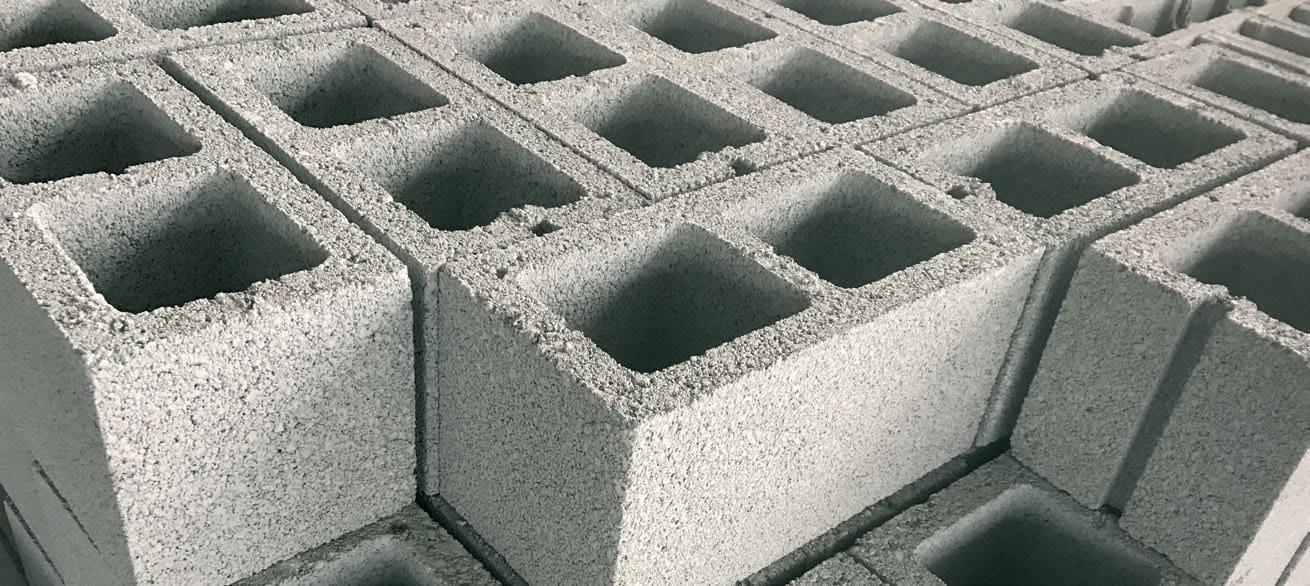

For 131 years we’ve cemented our legacy as a reliable and supportive Pan-African industry partner, with a range of hard working, 100% LOCAL, 100% PREMIUM QUALITY PRODUCTS.
Today, our products remain as proudly South African and unshakeable, as the people who invest in them. Provider of Premium Quality Building Materials.

